Messerschmitt
 German Aviation - The full list
German Aviation - The full list
Introduction
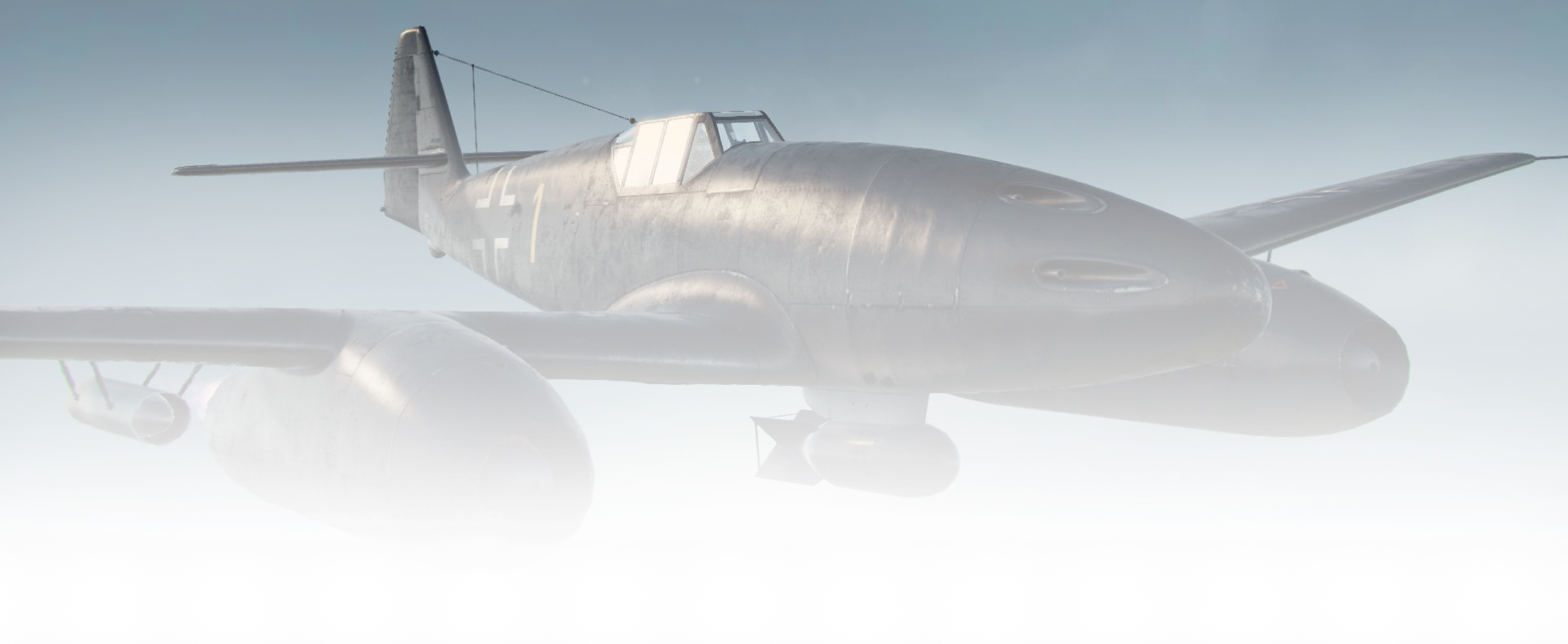
Me 108 Taifun (1934)
The Messerschmitt name started in 1925 when Willy designed the M.25, a sports plane that became very popular and gained many prizes, helping him finding a manufacturer at Bamberg. It was followed by the M.19, while two passenger planes were also built. His first trainer was the M21 in 1928. It was followed by the M22, a prototype medium bomber that won some attention from the German ministry of Transport, as a cover for the future Luftwaffe. It was built by Bayerische Flugzeugwerke (BFW) but secured no orders. Other civilian models followed until 1934, mostly sports aircrafts, small passenger plane, racers and one trainer, that became Willy's first great success.

The Me 108 was a single-engine sport and touring aircraft, an all-metal twin-seats side by side monoplane developed by Bayerische Flugzeugwerke (Bavarian Aircraft Works) but designed by Willy Messerschmitt. It was named initially M 37, and under that first name participated in the Polish-held 4th Challenge International de Tourisme in 1934. It was then propelled by an air-cooled inverted V8 Hirth HM 8U 8.0 litre engine rated for 250 PS (247 hp, 184 kW) and a three-blade propeller. Having superb characteristics it was quickly the preferred plane for record flights and competitions. The Bf 108B appeared in 1935, with a larger Argus As air-cooled inverted V8 of 112.67 litre displacement. It was soon named by a celebrity, Elly Beinhorn, Taifun ("typhoon"). The first batches delivered at the Augsburg plant for the civilian market were followed by the Luftwaffe that adopted it as its main personnel transport and liaison aircraft.
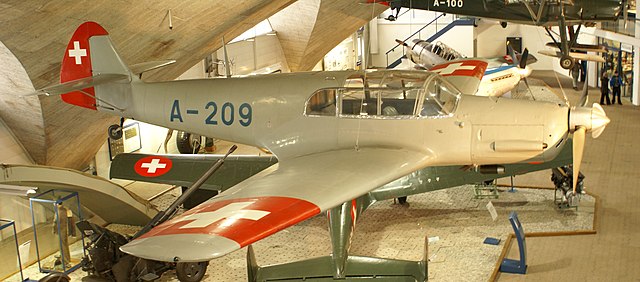
Variants: -Bf 108A (7), 1934 compeition plane, with a Hirth HM 8U then Argus As17B and later Siemens Sh14A radial.
-Bf 108B (878) 1935 main production variant, with initially a Siemens Sh14A radial, then 240 PS Argus 10C or 270 PS Argus 10E. It had a quadrant-shaped rear window, tailwheel, new empennnage and no tailplane upper bracing. Used by 25 countries.
-Bf 108C (0) Proposed high-performance version with a 400 PS Hirth HM 512 engine.
-Bf 208 (2) prototypes derived from the SNCASO production in occupied France with a retractable tricycle landing gear. The French will continued its production as the Nord Noralpha, and later derived from it the Nord 1000/1001/1002 Pingouin
The me 108 was not armed, but was used for advanced training and sometimes for reconnaissance. It was easy to fly, reliable, fast and agile enough to be used in many featured films like The Longest Day, The Great Escape, 633 Squadron, Mosquito Squadron, Von Ryan's Express, and even Spielberg's the last crusade adventure movie.
Me 110 Zestörer (1935)

Cantilever single-engine planes were fast, light and agile, perfect combination for fighters. However already in the 1920s, there was a concept of long range bombing missions that required the escort of a fighter. However having just one engine, most fighters of the time were way below the required range to perform these missions. The problem was well known for years and resurfaced with allied bombers over Germany, until the P51 Mustang came out. Until the, the logic to reach the desired range was to create a twin-engine fighter. Thus, such plane would also carry substantial bomb loads and therefore carry many missions outside escort. The concept became one of Hermann Göring preferred topics, of a "Zestörer" or "destroyer", popular in the late 1930s with most countries. The RLM had a 1935 specification for such models and several manufacturers answered the call.
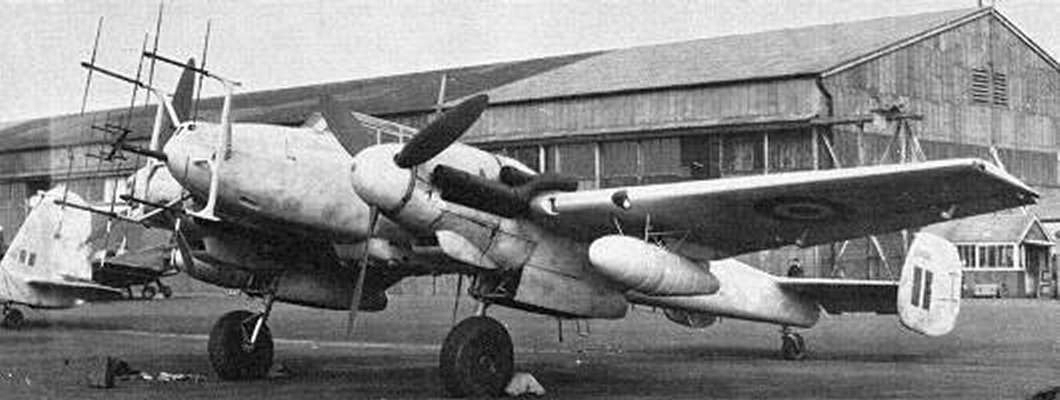
The Messerschmitt Me-110 was designed as a twin-engine heavy fighter also declined as a fighter-bomber (Jagdbomber or Jabo). Because of its twin engines which allowed a greater range, light aiframe and narrow fuselage, the Me 110 had a nose available to concentrate almost a modest firepower at the beginning: Two MG FF 20 mm cannon, four 7.92 mm (.312 in) MG 17 machine guns. The rear gunner in defensive position handled one 7.92 mm (.312 in) MG 15 machine gun and later a twin-barrel MG 81Z with a limited traverse due the cockpit enclosed ball mount. Although the development of its successor, the Messerschmitt Me 210 started early one, before the war, endless teething troubles ensured it was never ready until later into the war, as the Me 410. Meanwhile, the mass-produced Bf 110 soldiered on all fronts until the end of the war as almost a jack of all trades, mostly night fighter at the end.
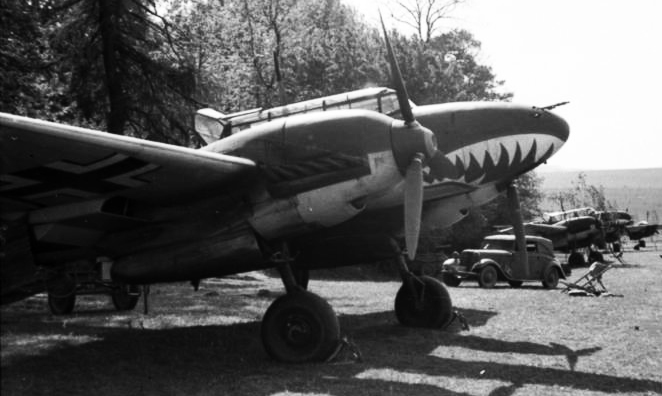
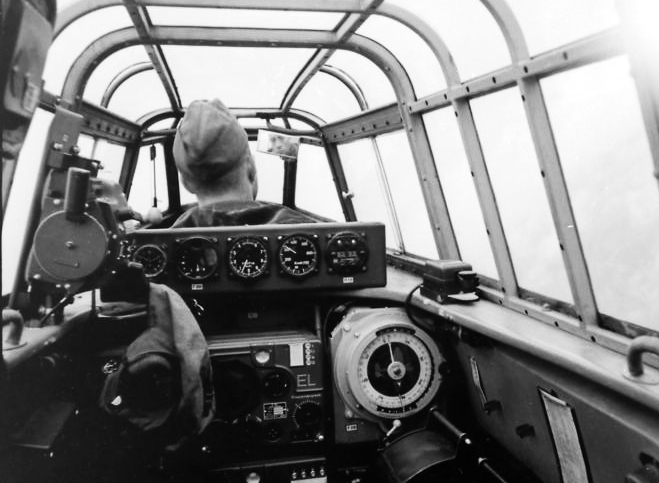
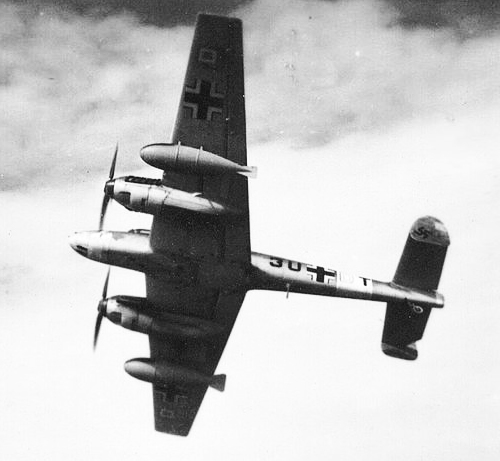
Confronted to a relatively weak opposition, the Bf 110 was often as fast or faster than most fighters of the time, and has many initial success in the early war, in the skies of Poland, Norway and France. But with the summer of 1940 and the first encounters with more modern fighters like the Bloch and Dewoitine, or those of the RAF, the Bf 110 primary weakness, its lack in agility, came into light quite blatantly. Although tactics were incriminated, this never compensated for the absence of dogfighting capabilities, especially in the Battle of Britain. Later on in the Balkans Africa and Russia, the Me 110 regained some utility when the sky was relatively safe from good fighters, it rendered excellent ground support to the German Army, complementary to the Stukas. But past 1943, the majority of surviving Bf 110 were withdrawn and redeployed in Germany, as night fighters, with state of the art radar equipped. The Me 110 almost then regained all its potential and was found quite efficient against the large formations of British Bombers. Other units also protected the skies over Germany by day, against strategic air attack of the USAAF's 8th Air Force, but only before the arrival of long-range escorts like the Mustang and Thunderbolt in mid-1944. Among those Luftwaffe aces that "shined" in night hunting on the Bf 110 was probably the ace of aces on this plane Major Heinz-Wolfgang Schnaufer, which claimed 121 victories in 164 combat missions.
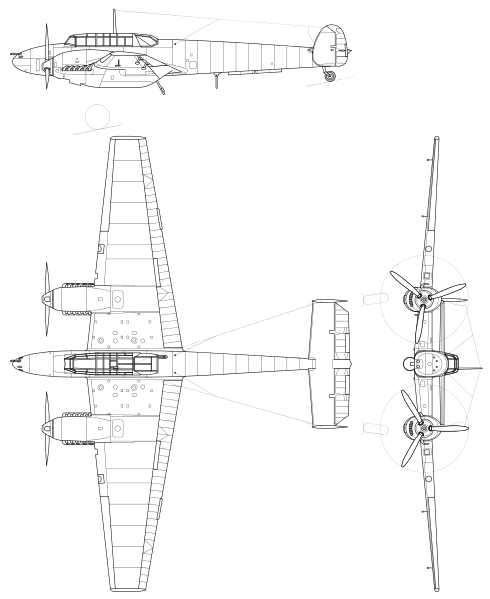
Main versions
Bf 110 A, pre-prod prototypes, two Junkers Jumo 210 engines: A-0 (4 built)Bf 110 B, first production batch with two Jumo 210 engines, B-0 and B-1, 4x MG 17, 2x 20 mm MG FF cannons, B-2 Recce version, 2 canons removed, cameras added. B-3: Trainer, cannons removed, extra radio
Bf 110 C, Main early production version, with the DB 601 engines, witn ten C-0 pre-prod, C-1 with DB 601 B-1, C-2 with FuG 10 radio. C-3 upgraded MG FF/M cannons. C-4 upgraded crew armor, C-4/B Fighter-bomber with ETC 500 bomb racks, DB 601 Ba engines. C-5 reconnaissance version with Rb 50/30 camera (MG FF removed) and DB 601P engines. C-6 was experimental with a 30 mm (1.18 in) MK 101 cannon in belly mount and DB 601P engines. C-7 Fighter-bomber variant with ETC 500 centreline bomb racks and DB 601P engines.
Bf 110 D: Heavy variant, long range versions with external fuel tanks (Norway). D-0 prototype with belly-mounted tank Dackelbauch. D-1 Long-range with optional Dackelbauch plus underwing drop tanks. D-1/R1 Longer-range with Dackelbauch and larger 900 L (240 US gal) drop tanks. D-1/R2 with droppable 85L oil tank in place of Dackelbauch, two wing-mounted 900 L (240 US gal) drop tanks. D-2 two wing-mounted 300 L belly bomb racks (2x 500 kg bombs). D-3 had lengthened tail (rescue dinghy), wing-mounted 300 L/900 L drop tanks, optional ETC 500 bombracks. D-4 had MG FF removed, Rb 50/30 camera, 2x 300/900 L drop tanks.
Bf 110 E: Strengthened airframe, to carry up to 1,200 kg bombs. Bf 110 E-0 pre-prod with DB 601B engines, ETC50 bomb racks. E-1 main production version with DB 601P engines. E-1/U1 night fighter conversion (Spanner-Anlage infrared homing device). E-2 had DB 601P engines and rear fuselage extension (D3). E-3 long range recce with MG FF removed, Rb 50/30 camera.
Bf 110 F: Strengthened airframe and additional armour, and 1,350 PS DB 601F engines. F-1 standard fighter-bomber, F-2 Long-range variant (for day air raids), F-3 longe range recce, F-4 Night fighter
Bf 110 G: Improved with two 1,475 PS DB 605B engines, increased tail rudders. G-2 main version used Allied heavy bombers, often equipped with rockets. G-2/R1 had BK 3,7 under the fuselage. G-2/R4 had BK 3,7 under the fuselage plus two MK 108 in the nose. G-3 ws the long range recce version, G-4 the dedicated night fighter with FuG 202/220 Lichtenstein radar, optional Schräge Musik (oblique cannons) various engine boostsand existing Rüstsätze/Umrüst-Bausätze kits.
Bf 110 H: Last cancelled version (paper only) as documens were lost during an air bombing. One source (Bill Gunston) argues at least some H-2 and H-4 were produced around February 1944.
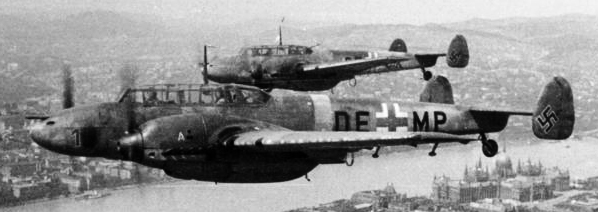


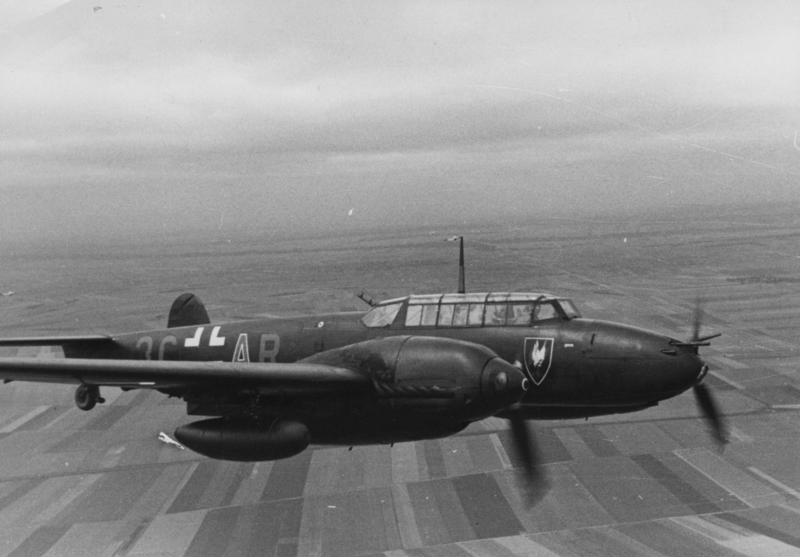
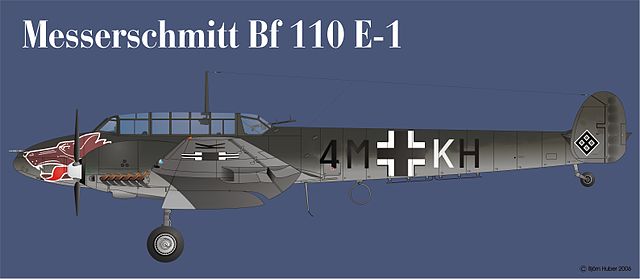
Operators
Overall, about 6170 aircrafts of thus type were built, which is more than the Junkers 87 Stuka (5,700) but less than the Junkers 88 (15,200), but still far than its ill-fated successor the Me 210 and me 410 Hornisse (1121). It was used of course by the Luftwaffe, but als by the Royal Hungarian Air Force, Regia Aeronautica (only three Bf 110 Cs), the Royal Romanian Air Force, Croatian Air Force, and some were captured and rused or studied by the Soviet Air Force and the Royal Air Force: One, with 1426 Flight. There are three known surviving aircrafts, one in UK, one in Germany and another in Denmark, none in flying condition.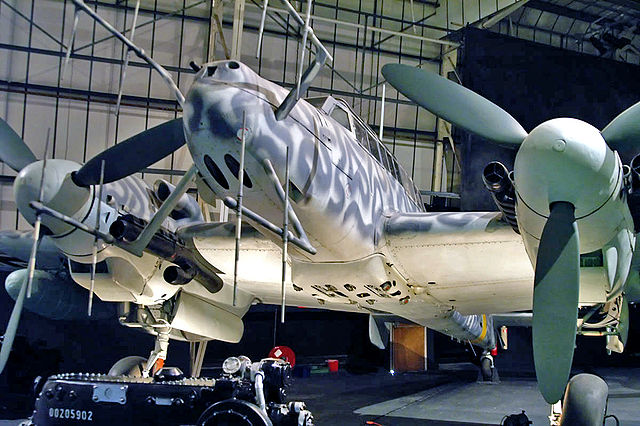
Specifications
Dimensions: 16,3 m x 12,1 m x 3,3 m, aera 38,5 m2Weight: 5 200 kg empty, 6 750 kg loaded
Power: 2x Daimler Benz DB 601 B-1, V12 1 100 ch
Performances: Top speed 560 km/h, radius 1 100 km
Armament: 2 x 20 mm, 5 x 7,92 mm, including one defense ring.
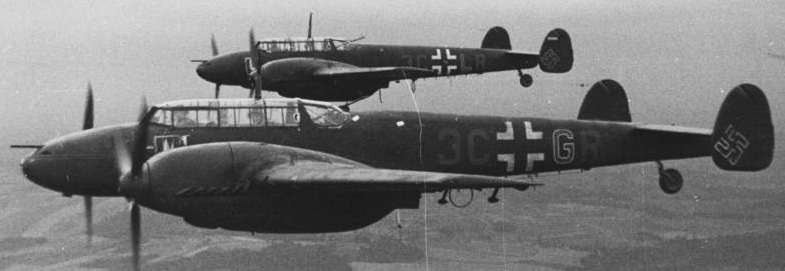
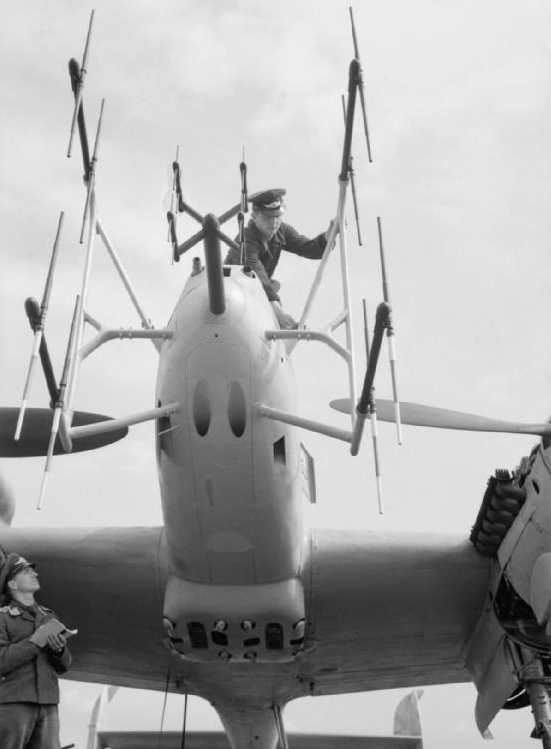
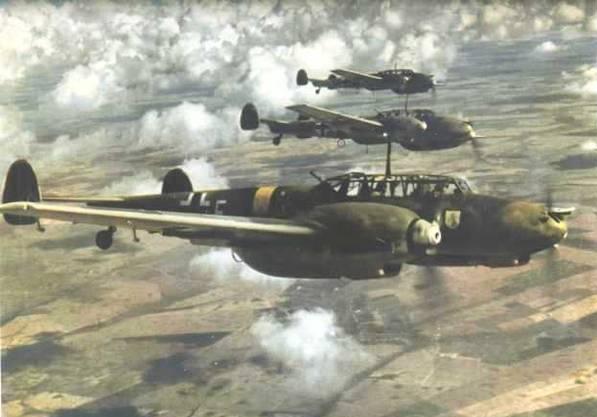
Me 210/410 Hornisse

Other competitors, arguably better
The Me 110 being reconverted as a night fighter, its replacement in the first intended role, a destroyer and escort fighter, became even more urgent. Development of the Me 110 successor started early on, but this program was plagued by so many problems it impacted badly Willy Messerschmitt's own reputation. It is strange, as contemporary to the Me 110 were qite successful, such as the Focke-Wulf model tested with success, named Fw-187 Falke ("Falcon") back in 1937. When it first flew, the V1 exceeded the Me 109B top speed by some 80 kmh. It was given a pair of similar engines as the me 109B but was twice heavier, and had twice its range. It could have been the perfect multirole heavy fighter, but the RLM only ordered three pre-production planes A-0 before dropping the program. These three operational planes were used by Goebbels for propaganda purposes (to replace the Me 110 in the medias, for disinformation, like for the Heinkel 110/112). But they also served in 1940-41 to defend Bremen, and was dispatched for some time in Norway. Pilots there find it much more capable than the Me 110.The twin-engine destroyer resurfaced again by the same manufacturer, this time under the name of its designer, Kurt Tank. This was the Ta-154 which was a German copy of the British Mosquito, all in wooden composites. However in 1944, Germany was short of everything and the structure would not be assembled with Tego Film, the factory being destroyed by allied bombing. In its place, a cold glue, an acidic "ersatz" that could not match the requirements, attacking the wood. The second production A-1 dislocated in flight, followed by many other accidents of the same type. Nevertheless, the TA-154 was capable of 650 kph and armed with the Schräge Music system, with two 30 mm and two 20 mm firing in oblique position and improved radars. After 15 prototypes, A and C series, the last converted as Pulk-zestörer to blow up bomber formations, the TA-154 never officially entered service and was considered a failure. This picture would not be complete without mentioning the 1942 Heinkel He-219 Uhu, a deadly night fighter. It was given two DB 603G, 1900 hp engines and was capable of 670 kph, armed with nose machine-guns and back oblique cannons. Production would reach 286 planes in 1943 but ultimately it was stopped by Albert Speer.

The Hornet in Messerschmitt's shoe: The plane that almost cost Willy his chair...
Meanwhile, the Me 210 own development started in 1937. But it was to last longer than any other Luftwaffe model. By 1941, at last, all the major sever issues of flight stability and land carriage problems were solved. Production took place then to fulfill the order for 1000 placed by the RLM in 1939 already. But accidents multiplied to such an extent the RLM decided to ground all aircraft and cancel the order after the 352th place was received. There was such backlash that it was asked to the company to fire Willy Messerschmitt.But the engineers fortunately had their hands on the latest Daimler-Benz engine, the DB 603, and started again after a major redesign around this pair. The Me 410 was it was named resembled in many points to the Me 210. They shared the same cell, but longer, the same wings base followed by outer wings which had a different profile, same nose, cockpit and tandem seats, same tail unit, and same defensive armament, two barbette-style 13 mm MG-131 in the rear fuselage section and two MG-151/20 and two MG 17 7.92 mm in the nose. The intermediate model is called Messerschmitt Me 310 and had a pressurized cockpit, but its is soon dropped in favor of the simplified Me 410, which is defined as a fighter. The Me 310 armament was to be the same as the Me 210 A-1: Two 20 mm MG 151/20 cannons, two 7.92 mm (.312 in) MG 17 machine guns, and two barbette 13 mm (.51 in) MG 131 machine guns. The only prototype that flew was a modified Me 210 powered by two 1,380 kW (1,850 hp) Daimler-Benz DB 603A inline engines which took off on 11 September 1943. It showed hardly any aerodynamic improvement over the Me 210, was costlier and more complex, and it was therefore cancelled. The Me 410 prototype however showed much more improvement in aerodynamics and motivated some production.

Back in the race with the Me 410
In a general way, the Me 410 indeed is more powerful and smaller, lighter than the Me 110 and performances should match its new role, with a top speed of 620 kph. Later on, with a small-scale production going on, many armament modifications occurred:-Two cameras, no MG17 (recce version)
-Four MG-151/20, 20 mm cannons in the nose (plus the two 13 mm in barbettes)
-Two MG 151/20 and one 50 mm BK 5 (Heavy fighter/ground attack aircraft)
-Two MG 151/20, two Mk 18 30 mm cannons (heavy night fighter)
-Additional kits: Gondolas Machine-gun pods, MG 151/20, MK 103 or MK 108 guns, 210 mm rocket launchers, and belly variant with eight tubes (barillet).
Despite its short production of only 1121 planes until 1944, the Me 210/410 was possibly the most modified plane of the Luftwaffe, with about 140 modifications, as many potential sub-variants. It never filled its progenitors expectations but served anyway in Italy, France, and the Eastern front as heavy fighter and Schnellbomber.
Me 163 Komet

At a time where rockets and jets were in full swing in the Luftwaffe, designing basically a rocket fighter seemed the obvious move. Development by Alexander Lippisch in fact, started well before the war. It was the result of extensive tests by the engineer and designer that was Germany's top pioneer of aerodynamics, studying and testing the delta wings, tailless configurations, ground effect, and other interesting concept after the war. He went to work with the US Air Force and for Convair and its Delta lineage and B-58 Hustler. In Federal Germany, he invented the Dornier Aerodyne in 1972. But in 1930 already he designed the first flyable tailless delta wing aircraft and went to test others until 1939, the last one, the large DFS 40 was basically a flying wing in a pusher configuration. He went to work for Messerschmitt at the beginning of the war by order of the RLM and gathered his team around the project of a rocket-propelled tailless aircraft, as a potential high speed fighter. His DFS 194 was the first to fly with a rocket in 1940. But as a weapon the prototype did not met military requirements and frictions with Willy Messerschmitt led him leave the company for Vienna’s Aeronautical Research Institute, trying to solve high-speed flight problems. He started work also on a supersonic, ramjet-powered fighter, the revolutionary Lippisch P.13a, never completed by 1945. But he started working on the Me 163 in 1941 already. This very secret project became later in 1944 the only operational rocket-powered fighter aircraft of the war and first piloted aircraft to exceed 1000 km/h (621 mph) in level flight.

The Me 163A was the first preserie. By the way the number was chosen to deceive intelligence services, as it did not fit the chronological and factory order. The prototype was tested at Peenemünde with the HWK RII-203 engine, setting a new world speed record at the end of the year. Test pilot Heini Dittmar became the fastest man on earth in the attempt. The record held until the Douglas Skystreak broke it in 1947. The plane was launched from a ramp, like a V2 flying bomb. Its relatively small size authorized it to be carried at any point by a wheeled truck, thus negating the use of an airfield. However the problem came later as the plane turned glider when its rocket fuel was extinguished, tried to land on a flat and even surface. It was to be spotted in advance. It will appear indeed that a bumpy landing, due to the volatile nature of the T-stoff and Z-stoff that produced, when mixed, the energy required, was often fatal; In fact more fatalities occurred in this post-attack phase than any action in the air. The Me-163 was indeed far too quick for any gunner to attempt anything. However when the fuel tank were dry, the plane became an easy prey for any escort fighter when gliding slowly to its airfield. There was no landing gear by default, only a skid.
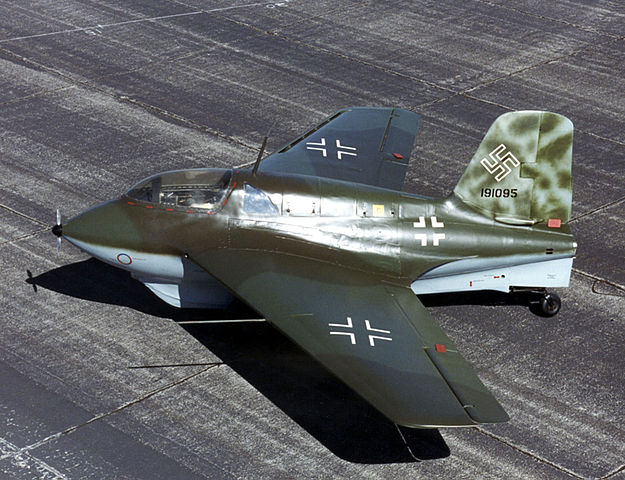
To dispense of the launching ramp another solution was tried. The rocket plane was to take off by itself, mated to a jettisonable main gear, "dolly" unit. The problem was, that this gear had inflated, rubber wheels that bumped quite well, enough in some cases to see the whole gear coming back to hit the plane when bouncing, breaking its trajectory or damaging the tanks (which ended with an explosion). Landing flaps were also used once to somewhat having a more controlled approach. But in any case, the return was a dangerous affair by all standard. But at the same time, performances were such, that a second serie was ordered, for production, the Me 193B. This one had a simplified fuselage, wing panel, retractable landing skid and modified tailwheel design all for mass production as well as a new one-piece conical nose which incorporated a turbine (hence the small nose propeller) that procured electrical power for instruments and armament. This was also the version famously designed by Walter with the notoriously dangerous HWK 109-509 bipropellant hot engine which had the advantage of simplifying production. Nevertheless refuelling was a very hazardous enterprise also, with great quantities of water needed to clean up everything of any trace of the Z-stoff or T-stoff, by the way given to different teams. One small mistake in the process could result in an immediate reaction. One reason the development took such time was among other the RLM (Reichsluftfahrtministerium) requirement for throttling the engine. In any cases, leakages after landing, Metal fuel lines and fittings failing, sometimes in unpredictable ways, and lack of training, care, fatigue or just plain haste led to many explosions on the tarmac.

By 1942 thirty Me 163 B-0 pre-production models armed with two 20 mm MG 151/20 cannon were ordered and delivered, and the RLM also planned 400 Me 163 B-1 production aircraft with two 30 mm (1.18 inch) MK 108 cannons. The B-1a became the export variant, the Japan received after an U-boat transport and developed its own version, the Sushui. This production version had fortunately very docile landing characteristics, which made it more survivable. Its excellent gliding qualities was also a benefit of its shape, but also a curse when landing, as it can but uplifted by a sudden gust of wind or draft; or skimmed for too long because of ground effect. The plane generally took off at 320 km/h (200 mph) the aircraft in a so-called "scharfer Start", jettisoned its dolly at 676 km/h (420 mph) retract the skid and pull up into a 70° angle, reaching the desired 12,000 m (39,000 ft) in just three minutes, way beyond the capabilities of any plane at that time, Me 262 comprised. Tests went on and at some point, Dittmar reached 1,130 km/h (702 mph), a record that held even with Yeager's X1 1947 flight. It was beaten by an Hawker Hunter F Mk3 in 1953. But it was made after a special preparation. Production models were not usually pushed that fast.
Next came the Me 163C: It was Waldemar Voigt of Messerschmitt's Oberammergau project, as he tried to implement the new twin-chamber Walter rocket engine, and fix other problems. It was also improved in many ways, with a wing root extension, longer fuselage with extra tank capacity, pressurized cockpit, bubble canopy for a better visbility and no longer tailfin, which allowed to reach 15,850 m (52,000 ft), well above the bomber's altitude, so to allow the Komet to plunge over the bombers, in a perfect attack position. The two 30 mm canons were amazingly destructive at these speeds, even with only a few hits. Engines exploded, wings were cut in two fuselages were split open. However by that time general situation in Germany was in shambles, and apparently only one Me 163 C-1a was tested, without its engine. The project was then moved to Junkers, under the direction of Heinrich Hertel at Dessau. He focused on the retractable landing gear, which resulted in the Junkers Ju 248, using the latest Walter rocket in a three-section fuselage to ease construction. The V1 prototype was completed for testing in August 1944, was flown, launched by a Ju 88, but the project was once again reassigned to Messerschmitt. Meanwhile the factory created to mass-producing it was overrun by Soviet Forces and the project went briefly under the hands of Mikoyan-Gurevitch.
Meanwhile the Komet went into service, nearly after three years of development. The model A was operationally tested by Erprobungskommando 16 in late 1942. In the summer of 1943 it was moved to Peenemünde-West field. Then it was moved to the base at Anklam, near the Baltic coast, and again at Bad Zwischenahn from August 1943 to August 1944. Attacks started with the Me 163B in May 1944. The planes operated usually in pairs. During the initial climb at high altitude and dive the pilots had to breath oxygen from a mask during the attack. The initial velocity allowed two passes, firing a few rounds before gliding back to the airfield. Pilots were trained to endure the thin air of the stratosphere without a pressure suit in pressure chambers and had a special low fiber diets. The first successes came on 28 July 1944 from I./JG 400's based at Brandis, which crippled a B-17 formation. But these were nine confirmed kills for 14 Me 163s lost. Siegfried Schubert became the only pilot with three confirmed kills. Usually allied pilots soon discovered the Komet weakness, just waiting for its rocket was silent to attack when the plane could only gently glide, although it still could maneuver with agility. Komets were also easy preys on their airfield, before and after attacks. This was remedied by systematically allocate a dense pack of anti-aircraft guns on the area. By the fall of 1944 JG 400 received 91 aircraft, but they were grounded because of the lack of fuel. By early 1945 six Komets has been lost due to enemy action; nine to other causes. But in March 1945 already, the Me 262 received high priority, and the Komet program was sidelined. JG 400 was disbanded in May, and pilots were reallocated to Me 262 units. The Komet meanwhile had inspired another radical concept, the Bachem Ba 349 Natter, which was even more simplified, but never operational. By V-day about 370 Komets had been delivered, and captured both by amazed Americans GIs and Soviet troops. Nothing comparable has been done anywhere.
Me 262 Schwalbe, the flying shark
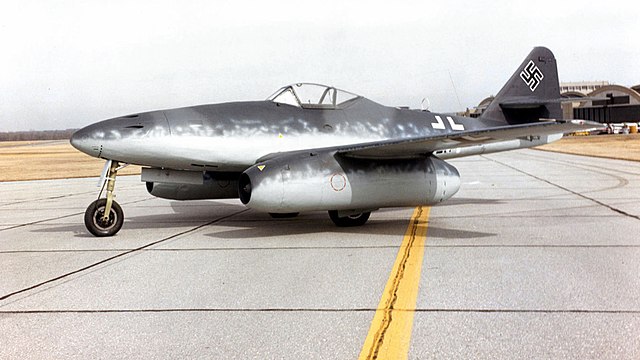
Legacy of the Me 262
Better known than the Komet, probably even more futuristic by some aspects but still operations in numbers, this potential replacement for the Me 109 could have been a game changer, if produced in numbers right fro the start as a fighter. But thanks for the allies, Hitler's bullying over its conversion as a fast bomber proved its undoing. By the time the Me 262 was available in operational units the tide had already turned for Germany. This was perhaps the best remembered jet fighter of WW2, the only other one being the British Meteor. Both never met in the skies of Northern Europe, as the "Schwalbe" was defending the German Reich interior, meeting only Mustangs and Thunderbolts most of the time, while the Meteor was basically a "V2 buster", dealing with flying bombs over UK until the ground troops had captured all the launching sites near the coast.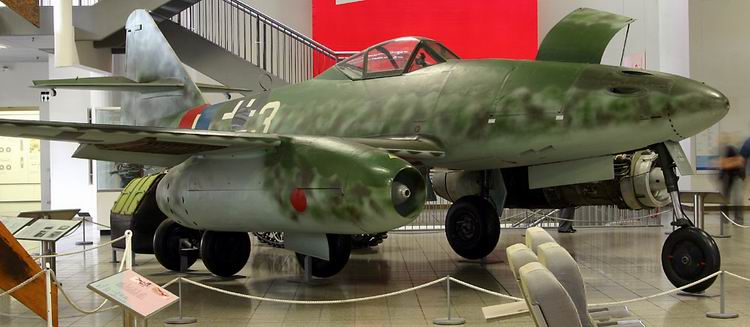
Technically, the Me 262 could rightly be called a "wunderwaffe", a secret "wonder weapon". It was indeed in 1944 probably the most advanced fighter in the world, 200 kph faster than any other allied plane. And speed was a crucial factor (and still is) in aerial combat. You strike first and get away unharmed. With its delta wings, front tricycle, and powerful armament, the 262 was more related to the late 1950s than WW2. Only engines betrayed its early nature. It needed a pair of feeble and troublesome Jumo engines to propel it. But plans and paper project later shown larger, more powerful engines and new air flow design, which ended with planes that truly resembled the second generation jets of the 1950s. Operation Paperclip indeed allowed the allies to recover German engineers which worked -also on the other side of the iron curtain- to this generation of fighters. Both the F86 Sabre and Mig-15/17 were the result of these forced collaborations. Perhaps the "purest" form of post-1945 paper project turned reality was the Argentinian Pulqi II, a creation of Kurt Tank, father of the Fw 190 and many other models.

Genesis of the Me 262
Originally the idea came from Hans Joachim Pabst von Ohain 1936 tests with jet engines, showing the potential of such tech. His worked went into the creation of the world's first jet aircraft, the Heinkel He 178 which first flew in 1939. In fact the Me 262 started development as Projekt 1065 (P.1065) even before the start of the war, driven by an official RLM specification for a 850 km/h (530 mph; 460 kn) capable fighter with one hour of autonomy. Only a jet engine could do any good in that quest. Design team was headed by Waldemar Voigt under supervision by Robert Lusser from Messerschmitt. First drawn up in April 1939 amazingly shown root-mounted engines, rather than the later pod-mounted solution adopted later. This final design was submitted in June 1939, and the change to underwing pods allowed easier access and maintenance, as the engines were always in early development stage. BMW 003 jets proved heavier than anticipated, imposing the wings to be further swept back to balance the center of gravity.
Development of the Me 262
Initial engine development was hampered by an official lack of support. Hermann Göring for example curtailed the engines development team. Also Willy Messerschmitt himself was concerned to let mass production of his Me 109 go and preferred to favor its successor the projected Me 209. Adolf Galland however as a general flew the Me 262 himself on 22 April 1943, after many delays caused by engine development problems. One of these has been the lack of a thermal resistant alloy, which remained unsolved in 1945. Because of this, engines life was pretty short. After a failure in 1941, the first successful flight occurred in 18 July 1942, powered by a pair of Jumo 004 engines. Meanwhile design of the wings, ailerons and tail, as the fuselage were led by Ludwig Bölkow (which will work in the cold war in the Bölkow-blohm group that led to a successful lined of helicopters). He designed in particular AVL derivatives of NACA airfoils and single-spar cantilever wings with stressed skins. To save time and materials in production the inner sections were never painted. Despite Galland's strong support, the Me 262 program hit a wall when in mid-1943, when the production was about to start, Adolf Hitler suddenly decided to convert it to a fighter-bomber, a Schnellbomber ("fast bomber") to hit back the expected allied forces in France after a probable invasion. This led to the development of the the Sturmvogel variant, but historians still argues today about how much this decision delayed the main program. Given the reaction of Galland and other Luftwaffe officials over this decision there is little doubt they feared the delays caused by this change anyway. On the other hand, it was recoignised that engine vibration issues cost much delays too. But there are arguments, based on Albert Speer memories, over Hitler blocking any mass production of the plane or any use as a fighter, preferring to use its speed in a straight line as "untouchable bomber", a bit like the Mosquito.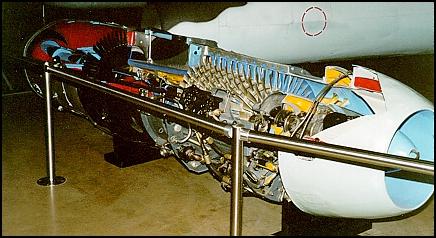
From tests flight to operational service
Test flights started on 18 April 1941, but were plagued by acute engine problems. Only by 1944 production started at slow pace. It was to reach 1,430 ultimately at V-day. So in the meantime, a "volksjäger" project was launched, which ended with the oversimplified Heinkel He 162. The "schwalbe" (after the shape of its fuselage) was a costly and complex plane, the airframe needed 6,400 man-hours alone. Another aspects was the engine which almost slowly "melt itself" in use because of the lack of thermal resistant materials. Operational life of these was about 125 hours, about 60 flights. The British were at an advantage on this. The first operational unit became in 19 April 1944 the Erprobungskommando 262 based at Lechfeld south of Augsburg. This training unit was led by Hauptmann Werner Thierfelder. On 26 July 1944 at last, Leutnant Alfred Schreiber flying a 262 A-1a damaged a Mosquito reconnaissance aircraft. Thierfelder was killed in action and replaced by Major Walter Nowotny. From then on, the Kommando Nowotny became the world's first operational unit to use jets in combat, engaging in actions again allied planes on a daily basis.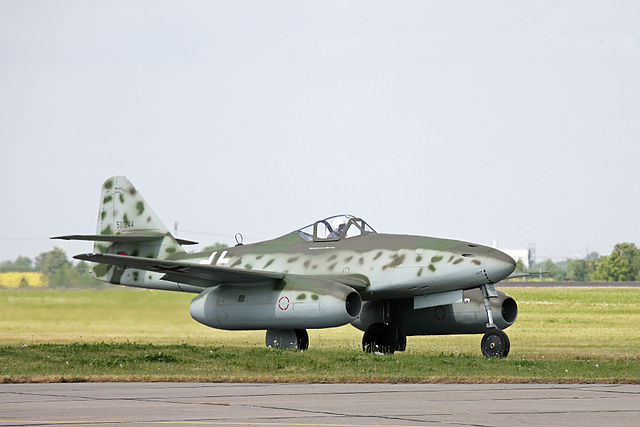
New tactics
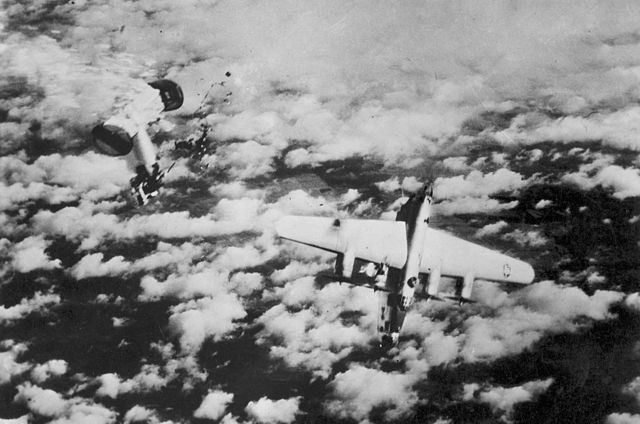
The breakneck speed of the 262 imposed a brand new sets of tactics: Against bombers, head-on attack was eliminated because of the closing speed prevented any accurate fire. Attacks from astern were also difficult. In fact a "rollercoaster" type of attacks was used: Approach from astern about 1,800 m higher (5,900 ft), and from 5 km behind (3.1 mi), dive into the escort fighter formation, pulling up sharply to reduce speed, levelling off 1,000 m astern at about 150 kph faster than the bombers in a perfect firg position. The 30mm MK 108 cannon were both short barrel and had low velocity at 540 m/s (1,800 ft/s) so pilots starting firing at 500 m and below. But one British test pilot recalled that the 262 would have been a much better bomber-buster with dive brakes. Due to this tactic, the window of opportunity to fire was about two seconds. Aiming was nearly impossible so that pilots had to "spray and prey". Later by 1945, tactic changed again when the 262 received underwings racks for 24 unguided folding-fin R4M rockets. Each of these rockets had strongly brisant Hexogen-filled warheads, capable of downing a B-17. BR 21 large-calibre rockets were also used to disrupt formations. Bu it came too late to have a real effect on the war, only a handful of Me 262s ever used with this system in the last days of the war.

Also it was discovered the Schwalbe was not a born-dogfighter. It was difficult to intercept by allied planes because of high speed and rate of climb. But it was also discovered some vulnerabilities. At low air speeds, the engines did not provided sufficient thrust for evasive maneuvers. The plane became a heavy sitting duck, contrary to the Komet that still can be quite agile when gliding. Also of the pilot was too brutish on the throttle, there was the risk of compressor stall, and excessive jet pipe temperatures. High wing loading meant the plane were difficult to land and needed a large airfield to take off. The 262s also had high-speed convergence, which left little time to aim and fire, compensated a bit by the hitting power of the 30 mm cannons. With time, German pilots learned how to master its effective maneuvering speeds, helped by Messerschmitt's trademark full span automatic leading-edge slats. In fact the Schwalbe clean design allowed even tighter turns than piston engines. So with experienced pilots they could be formidable dogfighters, and when attacking bombers, were invulnerable to escort fighters. In fact the allies soon learned that the only way to destroy them was to attack them on the ground or during takeoff and landing, that the Germans countered by installing "flak alleys" near airfields. They were also escorted when possible by Focke-Wulf Fw 190D and Ta 152Hs in these delicate phases of flight. Although th Mustang was the most effective "killer" of the German jet fighter (Chuck Yeager was allegedly the first to shot down one), the very fast British Hawker Tempest was the perhaps the best jet killer in operation, as recognized by Luftwaffe pilots themselves. Some of their "Rat Scramble" tactics on the Hopsten air base which also operated the Arado 234, proved very efficient until the German covered the surroundings with Flakvierling mounts.

Only in March 1945, there were sufficient numbers of units and trained pilots for massive attacks on bombers. On 18 March 1945 no less than 37 Me 262s of JG 7 fell over a force of 1,221 bombers and 632 escorting fighters. despite the odds they shot down 12 bombers for the loss of three of their own fighters. Although the 4:1 ratio answered the Luftwaffe objective, numerically this was a pinprick, with 1% losses for the allies. Priorities changed however. In late april and May in the battle of Berlin, Me 262s from JG 7 and other units were used as fast bombers, south of Berlin, halfway between Spremberg and the German capital, in support of the remnants of the 12 Army and 4th Panzer Army. Later on, 31 Me 262s were deployed in the Cottbus-Bautzen area. On 27 April, 36 Me 262s intervened north-east of Baruth, destroying dozens of lorries and Sturmoviks for a few losses. More losses ocurred during the 28 April and 1 May operations, by soviet ground fire and fighters. Apparently the last victory claimed by the Luftwaffe in this war, was Oblt. Fritz Stehle of 2./JG 7 on May 8, shooting down a Yak 9 but apparently shot down himself by an Airacobra. Luftwaffe top aces on the 262 were Hauptmann Franz Schall, with 27 victories and Oberleutnant Kurt Welter, a proficient night fighter and "mosquito killer". Oberstleutnant Heinrich Bär also claimed 16 enemy aircraft on the 262, but this added to his already impressive 240 victories on piston-engine fighters.
Another important model, rarer, was the trainer variant of the Me 262, the Me 262 B-1a. This twin-seat plane was found to be an ideal night fighter, with a seat reserved to the radar operator. Conversion was performed by the Umrüst-Bausatz 1 and consisting in fitting a FuG 218 Neptun high-VHF band radar in the nose. In 1945 they accounted for most of the 13 Mosquitoes lost over Berlin, using Wilde Sau tactics. However because of these requisitions, many pilots made their first jet flight in single-seater versions without instructor. After the war, a small number were operated by the Czechoslovak Air Force until 1951. Many others were captured by the allies, and carefully reverse-engineered and tested. Postwar jets owe a great deal in technology to these. There are many 262s in static display today and 2-3 in flying condition with modern engine, including one re-created by Germany with the help of sponsors like Airbus.
Prototypes
Messerschmitt Bf 161

The Bf 161 was a reconnaissance aircraft based on the Bf 110 similar to the Bf 162, a light bomber. The V1 was given two Junkers Jumo 210 engines and flew on 9 March 1938, followed by the V2 powered by two Daimler-Benz DB 600a engines (first flight 30 August 1938). The Bf 161 never entered production,the RLM realizing they did not eventually need this model as variants of the Bf 110 had excellent kits to perform this duty perfectly well. Nevertheless, the two prototypes went through additional R&D. V2 was used later to tow the Me 163A Komet, later relocated to Peenemünde. The V1 Crew was three,Deimsnions: 12.85 m (42 ft 2 in) x 16.69 m (54 ft 9 in) x 3.64 m (11 ft 11 in), Wing area: 38.5 m2 (414 ft2), Weight: 4,890 kg (10,781 lb), two Junkers Jumo 210G, 730 kW (979 hp) each, for 440 km/h (274 mph) top speed, and 8,100 m (26,568 ft) ceiling.
Messerschmitt Bf 162 Jaguar
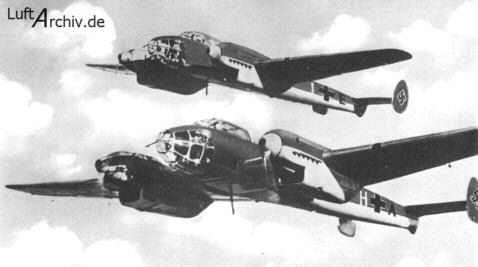
The Messerschmitt Bf 162 "Jaguar" was a light bomber designed in response to a 1935 RLM specification for a tactical schnellbomber ("fast bomber"). This was a modified Bf 110, with a glazed nose for a bomber crew ("bombardier") which flew in 1937, and three prototypes were built and flown in 1937. They were compared against the Junkers Ju 88 and Henschel Hs 127, and it was decided to select the Ju 88 eventually. However for disinformation purpose towards the West, German medias spread images of the Bf 162 in the German press under operational livery and dubbed "Messerschmitt Jaguar". Specs: Crew: three, pilot, gunner, and bombardier/navigator, Dimensions: 12.75 m (41 ft 10 in) x 17.16 m (56 ft 3½ in) x 3.58 m (11 ft 9 in), weight 5,810 kg (12,782 lb), tow Daimler-Benz DB 600Aa liquid-cooled inverted V12 engines rated for 986 hp (736 kW), top speed: 480 km/h (259 knots, 298 mph), Cruise: 425 km/h (230 knots, 264 mph), Range 782 km (423 nmi, 486 mi), climb rate 9.0 m/s (1,770 ft/min). The Bf 162 was armed with a single 7.92 mm MG 15 rear defensive machine gun and carried ten 50 kg (110 lb) bombs (internal bay) and two 250 kg (550 lb) bombs externally under wing pods.
Messerschmitt Bf 165

The Messerschmitt Bf 165 was a German long-range bomber project which never past the full-scale mockup stage. The latter was made for display to the Reichsführer in 1937. It had four defensive MG 34s: one between the two fins, one in the observer's glass cockpit, one in the fuselage bottom and one in the upper glass turret. The four engines had a wide radiator and the landing gear was retractable. The access door was located in the left of the fuselage. It could carry 1000 kgs of bombs in the internal bay, which was weak for a four-engine bomber.
Me 209

Given the age of the Bf 109 and usual replacement policy, work on its replacement started early on. This was the Me 209 development line. It was first designed as single-engine racing aircraft made to break speed records. A completely new aircraft designated so to fool the Western intelligence by Messerschmitt it was also hoped internally to associated its name in German medias to the Bf 109 already in combat service. The Me 209 designation indeed was a propaganda one, causing confusion with the Bf 109 and later reused for the actual proposed successor to the Bf 109.
Te first prototype (V1) -Picture above- was only made to break speed records, no consideration was given to fit an armament or military equipments. The second one (V2) however was a Me109 successor proposal. The V1 was a completely different aircraft from the 109, only sharing its Daimler-Benz DB 601 engine, but fitted with a proper steam cooling radiator. It was quite small, with a cockpit placed far on the fuselage, forwards its cross-shaped tail section and featured a wide track, with an inwardly-retracting undercarriage which allowed for much better landing characteristics. The reduced weight, better aerodynamics, better cooled engine, were supposed to procure the needed record speeds. The Me 209 indeed broke existing records in the hands of its first test pilot Fritz Wendel at 756 km/h (469 mph) on 26 April 1939 (D-INJR designation). The record held until 16 August 1969, broken by Darryl Greenamyer's on a widely modified Conquest I F8F Bearcat. The V1 record was broken in Germany by Heini Dittmar on a Me 163A V4 at 1,004 km/h (624 mph) in October 1941. Messerschmitt saw the potential of the Me 209 racer as a fighter especially after reports came from the Battle of Britain. The Bf 109 indeed was often taken in default by the Supermarine Spitfire in some speed areas. The converting the Me 209 for military use was an arduous task: The wings were occupied by the engine's liquid cooling system, so no armament could be fit here, it was difficult to fly and still hard to control on the ground. The V2 was given longer wings, a taller vertical stabilizer, and two synchronized 7.92 mm (.312 in) MG 17 machine guns on the nose, but its weight went up in the process, making it slower than the Bf 109E, which stopped all development.

Me 209 V4 in fictitious military livery.
The Me 209's designation was hoped by Messerschmitt to be associated to the Bf 109 in service and cause some confusion to Western intelligence. Also its speed record was used when associated with the fake designation Me 109R. It was to give an aura of invincibility to the Bf 109, later shattered by the Battle of Britain. The 209 was further developed into the V3 and V4. The surviving V1, in military livery was part of the Hermann Goering personal collection, but ended in the the Polish Aviation Museum in Kraków.
Me 209 v1 specs
Length: 7.24 m (23 ft 9 in), Wingspan: 7.8 m (25 ft 7 in), Height: 3.2 m (10 ft 6 in), powered by a Daimler-Benz DB 601ARJ inverted V-12 liquid-cooled piston engine, 1,324 kW (1,775 hp), reaching 755 km/h (469 mph; 408 kn) in straight line at about 3000m.
Me 209-II

The Me 209-II was a completely new animal which had more to do with the regular Me-109 than the previous Me 209 V1-V4. It was a wartime attempt to replace the Me 109 by designing an all-out improved version. The RLM's 8-209 airframe number was assigned for two designation Me 209 airframes to be used for two projects. Past the first project seen above, the second one was made in 1943, to compete against the high performance Fw 190 D-9 and Ta 152 fighters. The new Me 209 would share most of its airframe and parts with the Bf 109G as possible to make it cheaper and faster to produce. However the design team first engine choice, the DB 603A engine was in short supply. They had to be redirected to use the Junkers Jumo 213A engine. Despite it was rated for 35 litre in displacement this engine was designed to be pushed up to 44.52L displacement, like the DB 603. It was at that time Germany's largest-displacement inverted V12 aircraft engine. This design changed forced the team to rethink the engine cowling and cooling system and the air intake location, on the starboard side versus portside location for DB's inverted V12. To go with it, a new, taller tail section was designed, as well as new wings and wingtips, a wide-track landing gear and an annular radiator, giving it like its Ta-152 and Fw 189 Dora the appearance of radial-engine planes. However all these modifications undermined the original purpose of a much superior version of the Me 109G. The Me 209 V5 armament comprised a Motorkanone engine-mounted 30 mm MK 108 cannon and two 13 mm (.51 in) MG 131 machine guns in the wing roots. The next V6 was converted to use the Jumo 213 engine, with a pair of 20 mm MG 151/20 cannons instead of the MG 131s and the Me 209H V1 was a high-altitude variant with extended wings and DB 603 engine which never past the blueprints stage.

Specifications
Dimensions 9.74 a (31 ft 11 in) x 10.95 a (35 ft 11 in) x 4.00 a (13 ft 1 in), Wing area: 17.2 ve (185 fit„), Weight: 3,339 kg (7,346 Ib)/4,085 kg (8,987 Ib), DB 603G, 1,397 kW (1,900 PS - 1,874 hp) engine. Top speed: 678 km/h (423 mph), ceiling: 11,000 a (36,080 ft), Power to mass ratio 0.36 kW/kg (0.22 hp/Ib), 30 mm (1.18 in) Mg 108, two 13 mm (.51 in) MG 131.
Messerschmitt Bf 261 Adolfine

The Adolfine (after Hitler's personal commitment in the project) was a long-range reconnaissance aircraft design of 1938, enlarged version of the Bf 110, never put into production. The three Me 261s built were used for for testing and R&D. This project went back to 1937 the P. 1064, study for a long-range reconnaissance aircraft based on the Me 110 but with a much higher range. It was characterized by a long, slim fuselage, and was also an attempt to create a twin-engine record-breaking aircraft, especially for long-range records. This interested the RIM, which granted the project the designation 8-261. The first prototype was designed to carry the Olympic flame from Garmisch-Parten-Kirchen to Tokyo, Japan for the 1940 Summer Olympics in one go (9445 km). Hitler adored the concept and he personally patronized it, so the plane was named "Adolfine" in return. The Bf 261 combined many innovations for 1938: Single-spar all-metal wings usable as fuel tanks with a wing root depth slightly less than the height of the fuselage, which was of virtually rectangular section and housed five crew members. There were two pilots seated side-by-side, a radio operator behind, a navigator and flight engineer in the rear section, seeing through a stepped glazed station. Also completely new and unheard of was the solution of a four-engine plane, where two Daimler-Benz DB 601 engines on each wing were coupled on a single shaft, driving four-blade massive propellers. So it was still a twin-engine in appearance. The system was further developed for the wad, He 119 high-speed reconnaissance aircraft and Wan. He 177 strategic bomber. But in the 261, the DB 606 "power systems" in nacelles afforded a better access for maintenance and ventilation. They were also intended to drive counter-rotating propellers.
The prototypes were manufactured in the spring of 1939 When the war broke out their original purpose was no longer a priority as the Olympic games were likely to be cancelled. Nevertheless it was thought at the origin they could be used as very fast, very long range reconnaissance aircraft at the time when the Bf 162 looked more limited but by August 1939 all work stopped and the VI, V2 and V3 which differed in some details, went to R&D during the war. The V1 indeed first flew on 23 December 1940 with test pilot Karl Baur and was used by the RLM to test twin-engine and long range solutions. The V2 long-range maritime aircraft flew in early 1941 with a predicted range of 20,000 km and was thought to fly across the Atlantic and drop drop propaganda leaflets over New York City with the V1. The V3 flew in early 1943 with paired DB 610 "power system" engines, and flew over 4,500 km (2,800 mi) but its hydraulics failed and after repairs were completed it was sent to Oranienburg and flew numerous reconnaissance missions but its fate is unknown. The V1 and V2 were both destroyed in an allied bombing in 1944.
Characteristics
Crew 7, 16.68 m (54 ft 8¾ in) x 26.86 m (88 ft 1¾ in) x 4.71 m (15 ft 5¾ in), wing area 76 m² (817.76 ft²), two Daimler-Benz DB 610A/B 24-cylinder (coupled DB 605), 2,133 kW (2,900 PS) each, top speed 620 km/h (385 mph) at 3,000 m (9,840 ft), range: 11,024 km (6,850 mi) and ceiling: 8,260 m (27,100 ft). No armament.
Messerschmitt Me 263

The Me 263 was the successor of the famous rocket-powered fighter Me 163. Called Scholle (plaice), three prototypes were built but never flown as they lacked their definitive rocket and the program was cancelled with the dire situation of Germany in 1945. The whole program was dropped eventually.
At the origin, the Me 163 very short endurance was even shorter at the beginning. After modifying the default engine setting thrust "full on", leding to the addition of a throttle for some pilot dosage which lade a tremendous difference, on the Me 163C. it was using the HWK 509B or C dual chamber rocket engine fitted with a 400 kgf max for economic cruise. Powered endurance rose to about 12 minutes, 50% more. However the RLM was still not happy with this model, and decided to transfer this development to Heinrich Hertel at Junkers. They developed the 163C into the Ju 248. It had a new pressurized cockpit and bubble canopy, more fuel tankage, and crucially a also a new retractable landing gear. A mockup was shown on 25 September 1944 and the BMW 109-708 rocket engine was planned. However in the meantime, V18, of the Me 163c type was rebuiltand flown by Heini Dittmar at 1,130 km/h (702 mph) on July 6, 1944. Back at Heinkel, Hertel also planned the Lorin ramjet engines, but fitted his plane with the more conventient Zusatztreibstoffbehälter (auxiliary fuel tank), leading to a 10% speed decrease while the wing was modified to hold more C-Stoff.
In November 1944, the Me 263 Scholle (Plaice) appeared aside the Ju 248 Flunder. By early 1945, Junkers proposed the EF 127 Walli rocket fighter. After an unpowered flight of the Me 263 V1 in February 1945 it was revealed modifications of the center of gravity were needed with counterweights. This also led to massive redesigns, like repositioning the engine, the landing gear which was also still non-retractable. Test flights were stopped because of fuel shortages for the Bf 110 towplanes. The V2 and V3 were never ready on time for allowing mass production. The last would have the retractable landing gear and armament mounted. But in April, the Americans occupied the plant and captured the three prototypes. A part was handed over to the Russians, giving the Mikoyan-Gurevich I-270 interceptor.
Messerschmitt Me 264 Amerika

This long-range aircraft was intended to be Germany's main strategic bomber. Messerschmitt's competitor design project selected in the Reichsluftfahrtministerium's "Amerika Bomber" programme, aimed at bombing New York City from bases in France and the Azores. Three prototypes were built, but production was abandoned as fighter became the utmost priority while the Junkers Ju 390 maritime reconnaissance aircraft was eventually selected instead. The Me 264 innovated as being the very world's first aircraft with integrated wing fuel tanks, now a standard for long range aircrafts.
The 264 was derived from the prewar P.1061. A variant called the P.1062 swa three prototypes were built, powered with two twin "engines", Daimler-Benz DB 606 made of a pair of DB 601 inverted V-12. They helped the long-range Messerschmitt Me 261 derived from the P.1064 1937 design. These engines also made their appearance on the small-scale production Heinkel He 177A, a concept hard-pushed by Reichsmarschall Hermann Göring in August 1942. But by early 1941 already six P.1061 prototypes were ordered by the RLM to Messerschmitt, called Me 264, later reduced to three. Design process was slow, but became more urgent after December 1941 with the war declared on the United States.
The program was rebranded by the RLM in the spring of 1942, as a very long range bomber. The new design included a larger airframe for six-engines and a greater bomb load. There was compeition however, from the Junkers Ju 390, Focke-Wulf Ta 400, and short-lived redesigned Heinkel He 277. The latter only received by February 1943 some RLM clearance, time for Heinkel to design his very high-power 2000 hp engines to enter the Amerika Bomber program. The 6-engine Messerschmitt Me 264B was also a recoignition of the inability for Germany to design more powerful engines. The Junkers Ju 390 borrowed many parts for the Ju 290 and was eventually chosen by the RLM, but the Me 264 founded some interested from the the Kriegsmarine to get rid of its converted civilian Fw 200 Condor. Two pending prototypes were eventually completed as the Me 264A ultra long-range reconnaissance planes.
In a nutshell, the Me 263 was an all-metal, high-wing, four-engine bomber with a cylindric fuselage, and had a cabin with a glazed nose and "stepless cockpit" which reminded of the later American B29 design. The wing was slightly swept, with a straight trailing edge and the empennage was of the double tail ofr "H" configuration. The tricycle undercarriage comprised the usual very large retractable wheels monnted on the wing-borne main gear. The planned armament (never mounted or tested) would have comprised remotely operated turrets and side gun ports. Very little armour was carried and the defensive armament was limited in order to maximize fuel capacity and range. In the end after several engines tried four unitized 1,700 PS (1,250 kW) BMW 801G engines were chosen. For the first time, apat from the wings-mounted fuel tanks, the Me 264 featured bunk beds and a hot plates for meals in a galley intended as a crew's recreation and rest quarter, ideal for these long missions.
The Me 264 V1 RE+EN flew on 23 December 1942 with four Jumo 211J inline engines rated for 990 kW (1,340 hp) and later BMW 801G radials rated for 1,290 kW (1,750 hp). It showed a high 356 kg/m2 (73 lb/sq ft) wing loading, superior to the B29 (337 kg/m2 (69 lb/sq ft)). In addition to this the Me 263 V1 was plagued with many other issues: Bad climber, poor maneuverability, in-flight instability and requiring high take-off and landing speeds, therefore only customized very long tracks. The next Me 264 V2 was still unarmed but had engines armour, as well as crew and gun positions protections. But in 1943, the Kriegsmarine eventually went back to the existing and better-performing Ju 290. The program was buried and the Me 264 V2 was destroyed in a bombing attack, and during another raid, both the V1 and the uncompleted V3 were destroyed in the same raid.
Me 309

This fighter was yet another replacement project for the Me 109. The whole project started in mid-1940 during the Battle of Britain and an anticipation wanted by Messerschmitt and sanctioned by The Reich Air Ministry, which gave it low priority. The first draft was ready however in the end of 1941. This new fighter had a tricycle landing gear (with nosegear) and a pressurized cockpit. It also gradually incorporated new features tested on a some Bf 109F airframes, like the V23, V31 and V30. However the RLM was still cold on this project, and the first prototype was delayed until 1942, July. After its first flight, the 309 showed it was about 50 km/h (30 mph) faster than the Bf 109G, but still the latter could out-turn it.
And this was without armament. In that case, performances dropped to an unacceptable level. Then compared to the more promising Focke-Wulf Fw 190D, the Me 309 program was canceled. It bounced with the Me 609, an attempt to revive the project with a new Zerstörer (destroyer) to replace the Bf 110. The Me 609 consisted in two joined Me 309 fuselages with a new centre wing section and an unusual four-wheel arrangement while the cockpit was located in the port fuselage. A heavy fighter (4-6x 30 mm MK 108 cannons) and a Schnellbomber (2x 30 mm MK 108 cannons, 1,000 kg (2,200 lb) bomb load). But meanwhile the most promising Me 262 turbojet has been developed, and made the 609 obsolete. The Me 209-II was last attempt to replace the Me 109, using the same airframe. But it never passed the prototype stage.
Me 321/323 Gigant

The Me 109 was relatively small, even for fighter standards of the time, but Messerschmitt also produced amazingly large aircrafts, which proved its ability and scope to solve a whole range of aircraft related problems at any scale. The 321/323 was a family of cargo planes that had o equivalent in the world. They prefigurated the tactical and even strategic transport planes of the cold war, being the only ones able to carry troops but also light armoured vehicles in such quantities. This was at first a very large cargo glider (Me 321), to support large scale invasions. About 200 were manufactured but they were rarely used mostly due to the lack of suitable towing aircrafts. It was also highly vulnerable in flight, slow and agile as a brick, and difficult to handle on the ground. The Me 321 was developed later into the six-engined Messerschmitt Me 323 Gigant, which only solved part of the problems.
The model was requested for a possible invasion of Britain (Operation Sea Lion) where it was shown the Ju-52 was not able to carry more than infantry. Plans for Operation Sea Lion were eventually shelved in December 1940. The most cost-effective solution was then to use gliders and the technical Bureau of the Luftwaffe planned the Grossraumlastensegler ("large-capacity transport glider"). Copies were sent to Junkers and Messerschmitt. The initial specification called for carrying a 88 mm, tractor, or a medium tank. This became Projekt Warschau codenamed Warschau-Süd forMesserschmitt. The rival Ju 322 Mammut used all-wood construction, a risky proposition. Messerschmitt's design secured the prototype order, called Me 263by the RLM and later switched to Me 321.

The Me 261 had a framework of steel tubing from Mannesmann, wooden spars covered by doped fabric, ideal for quick construction, repair and weight. It was nicknamed Gigant due to its huge size, as its command bridge stood over 6 m (20 ft) high, with clamshell doors for easy access and exit and ramps for vehicles. The load area was eqivalent to six Ju 52, about 100 m2 (1,100 sq ft) and 23 t (23 long tons). This cargo space was also modelled on the standard German railway flatcar for a better transit from rail to plane. When modified with a passenger bay, it could carry 120 to 130 fully equipped troops and equipments. As a glider it was fitted with a jettisonable undercarriage made with standard Bf 109 mainwheels (front) and Junkers Ju 90 main wheels (rear) and four extendable skids to land.

The first flight of the prototype Me 321 V1 took place on 25 February 1941, piloted by Messerschmitt test pilot Karl Baur. Its towing plane was a Ju 90. It was also carrying 3 tonnes (3 tons) of ballast but the report stated the controls were heavy and responses sluggish. Also the cockpit sould be enlarged to include a co-pilot and radio operator plus dual controls, four arms being a better proposition than two. The massive trailing edge flaps propelled by Electric servo motors and a braking parachute were added. But further tests showed more takeoff difficulties, due to the Junkers Ju 90 being too weak, and three Bf 110 were used (the "Troikaschlepp") in a V formation. Heinkel proposed the Heinkel He 111Z Zwilling which had a fifth engine on the new interwing plus liquid monopropellant Walter for HWK 109-500 Starthilfe rocket-assisted takeoff booster units. All in all, it was less dangerous than the provisory "troika" but time was needed to complete the first planes.
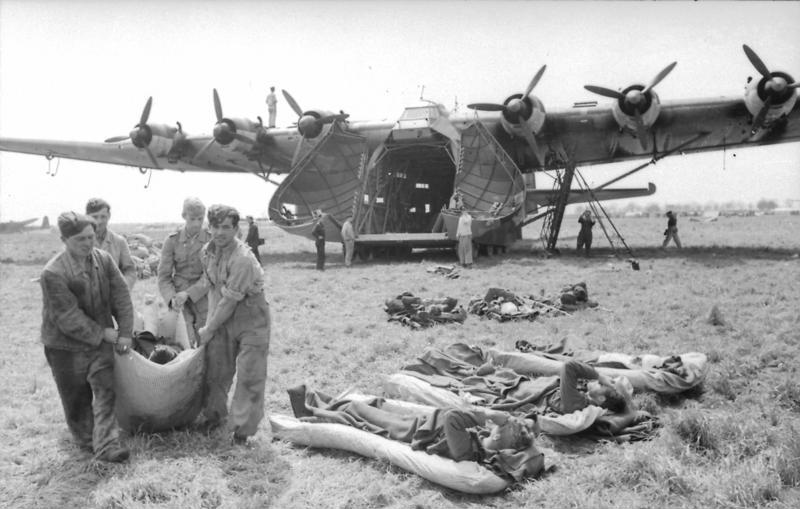
The me321 became operational in May 1941, deployed at Leipheim for advanced tests, but an early takeoff failure led to a collision of the towing Me 110 planes and the ultimate loss of the 129 occupants, the deadliest in flight history. The next Me 321 B-1 had a crew of three and was armed with four 7.92 mm (.312 in) MG 15 machine guns in the fuselage and wings. But in the eastern front, efficiencly was limited due to its inability to perform a second or third approach move on the ground without heavy tractors, and the dangerous "Troikaschlepp" provided a range of only 400 km (250 mi). All Me 321s were therefore retired in early 1942 and concentrated for the planned Operation Herkules (invasion of Malta) with the new He 111Zs, but the whole operation was abandoned precisely because of the lack of towing aircraft. They were sent in place, in a desperate operation to relieve the besieged Sixth Army at Stalingrad, but arrived too late and were returned to Germany. They were mothballed or scrapped, and converted into the powered Me 323, which had with six 895 kW (1,200 hp) engines. Another operation was considered, surprise reinforcements in Sicily, also abandoned because of the lack of suitable airfields.
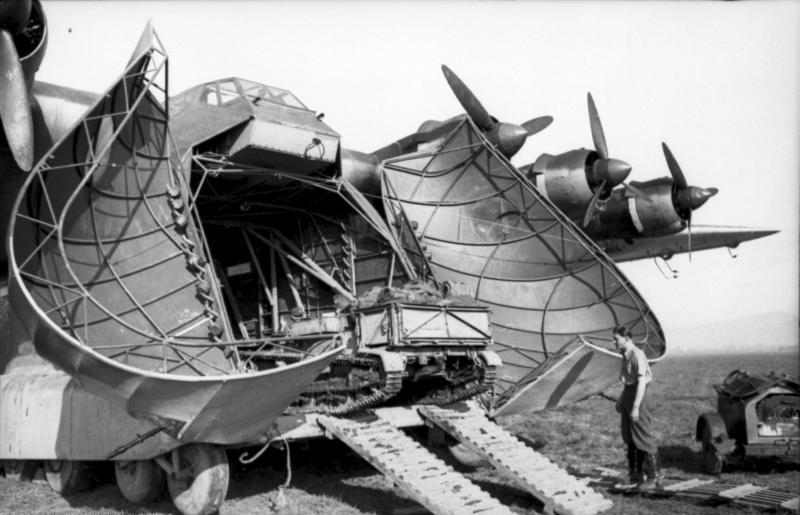



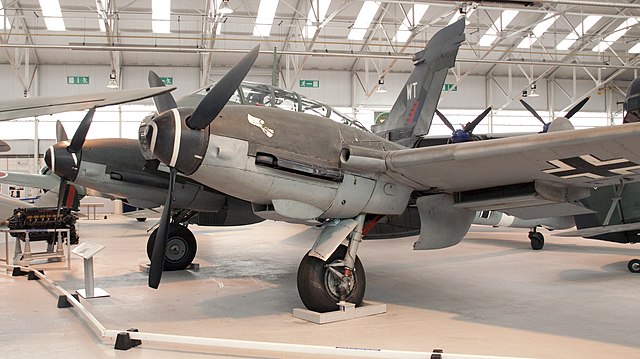

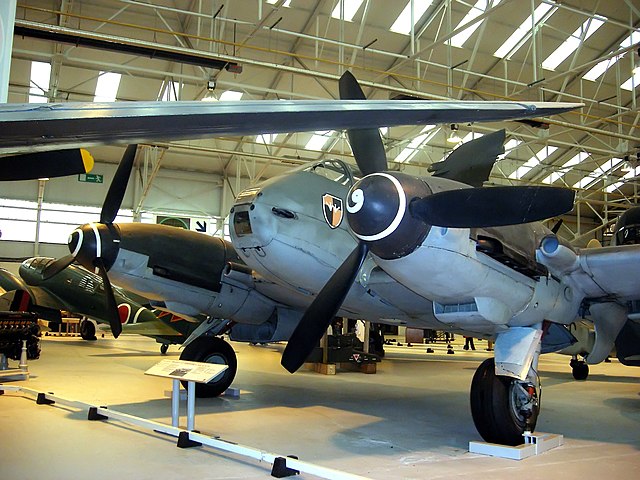
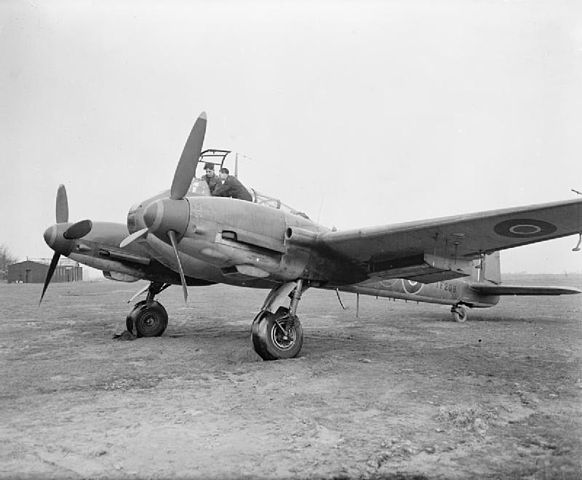

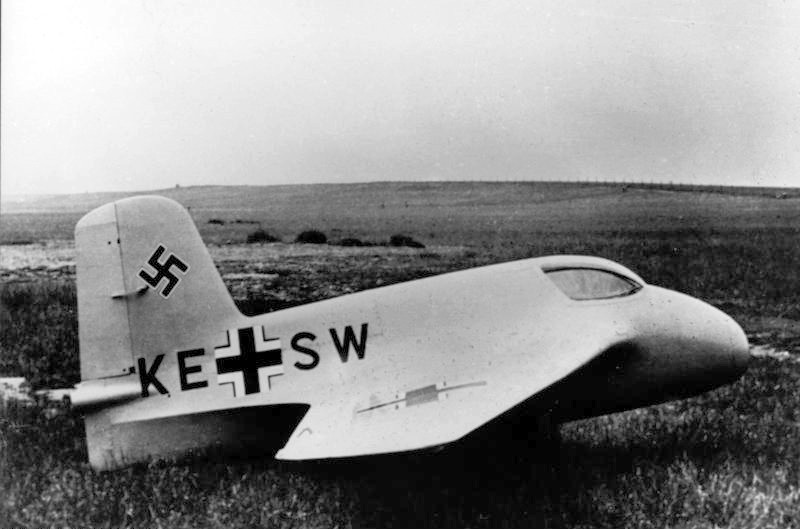
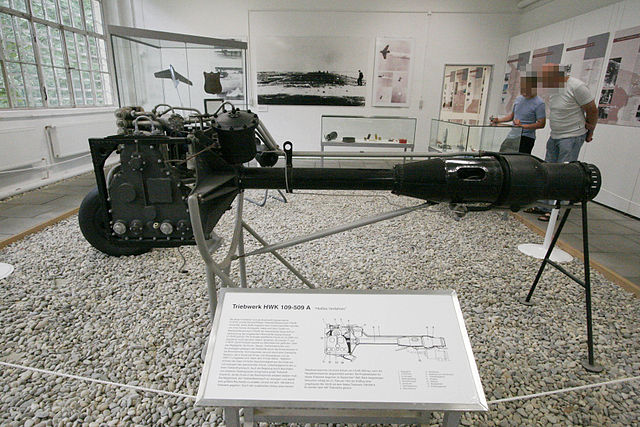



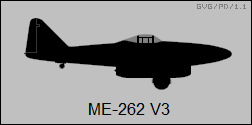
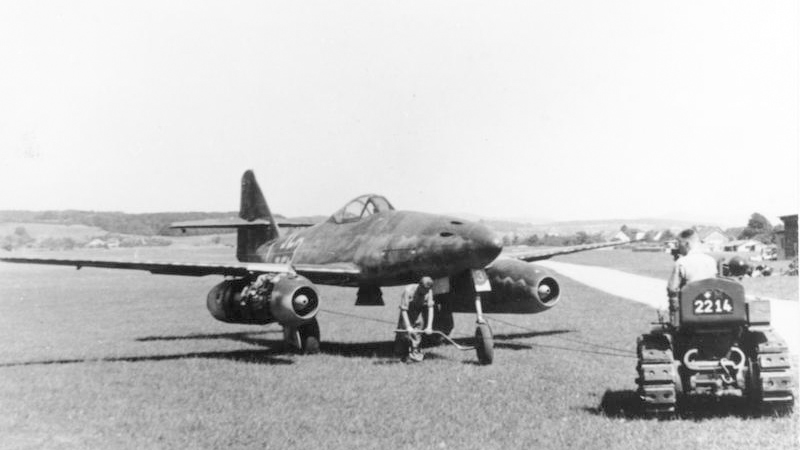
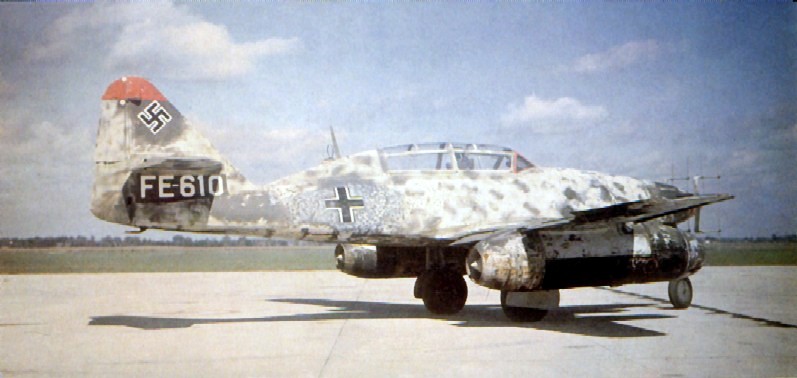
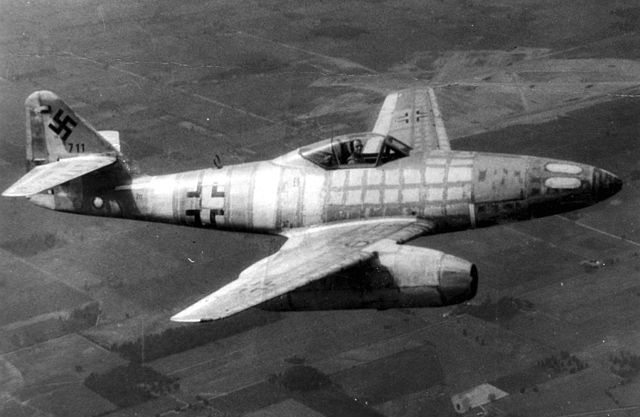
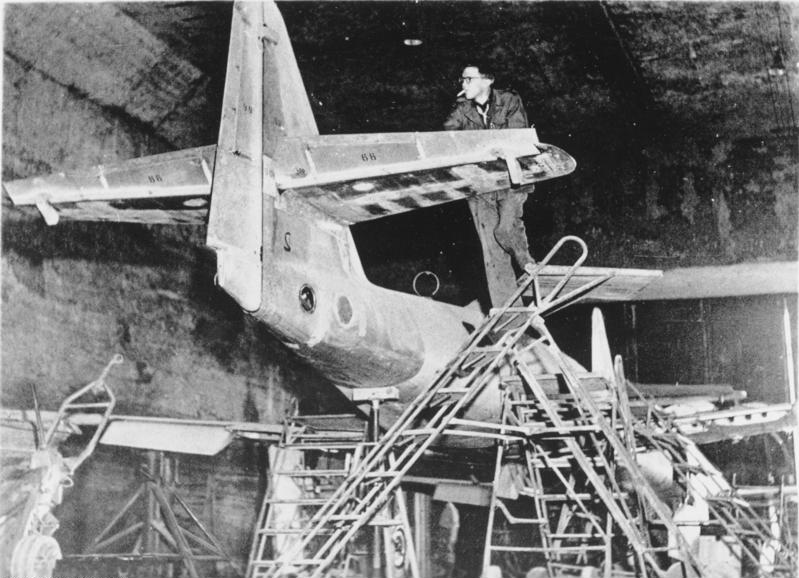
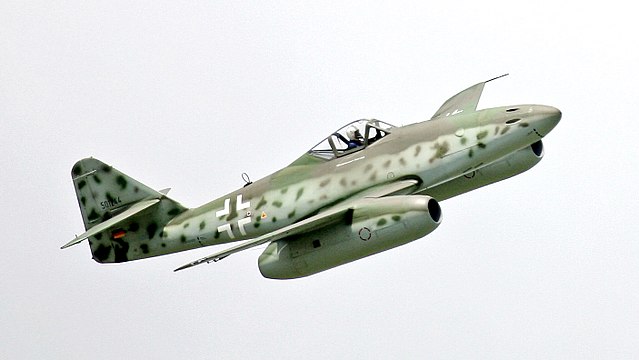

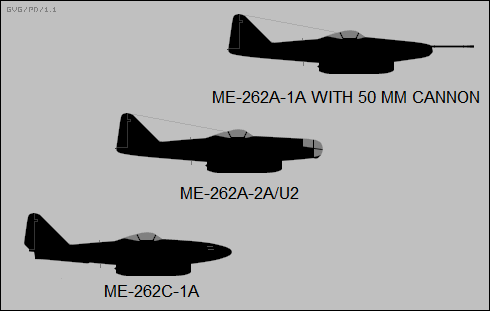

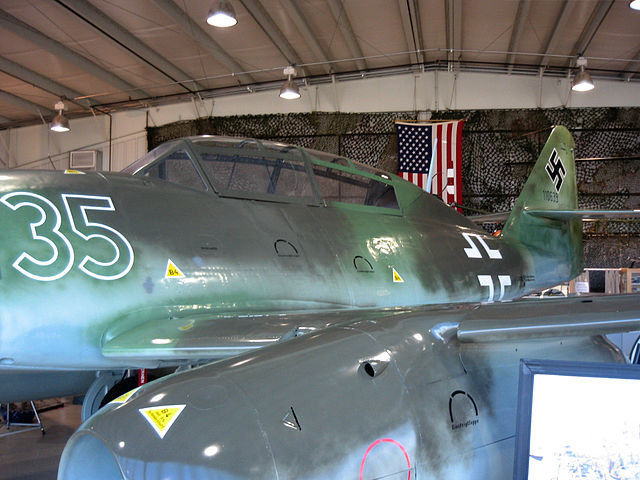
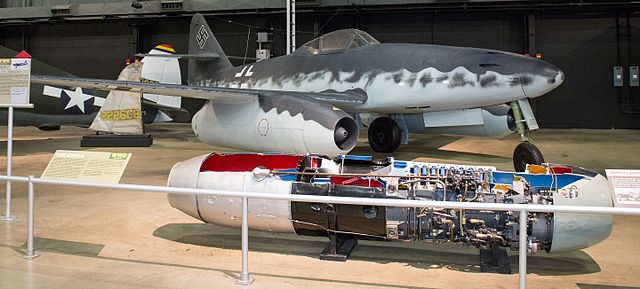
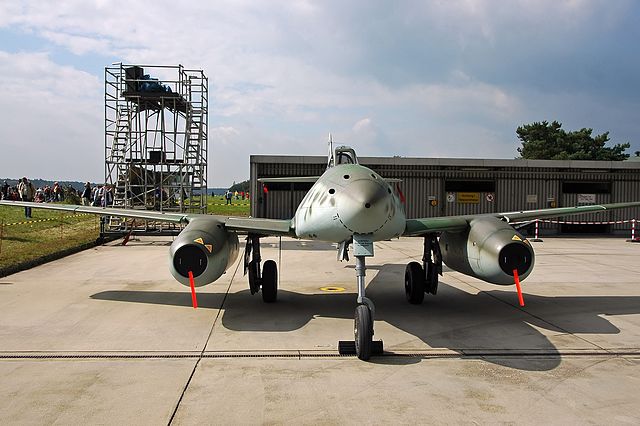
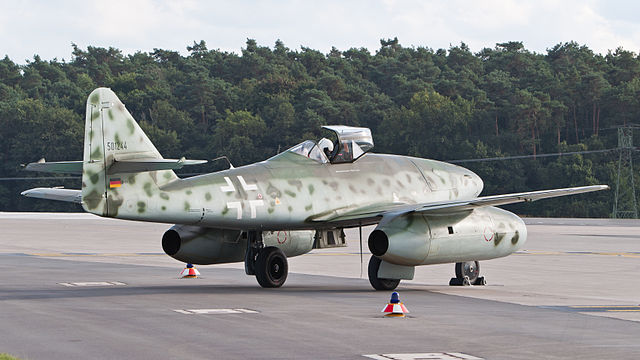
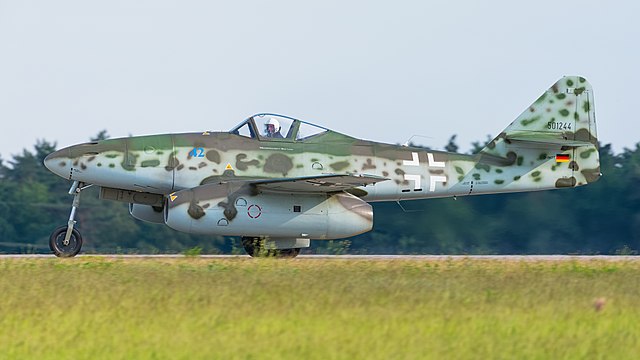


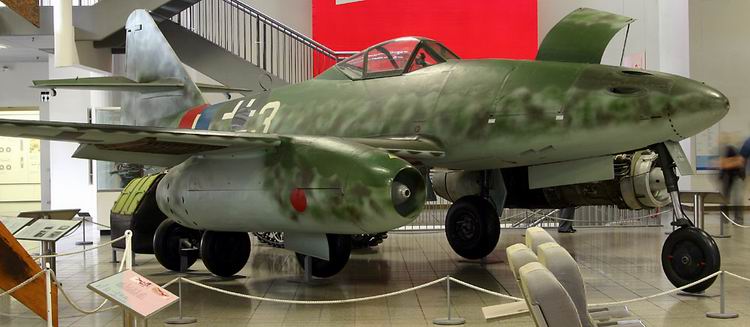
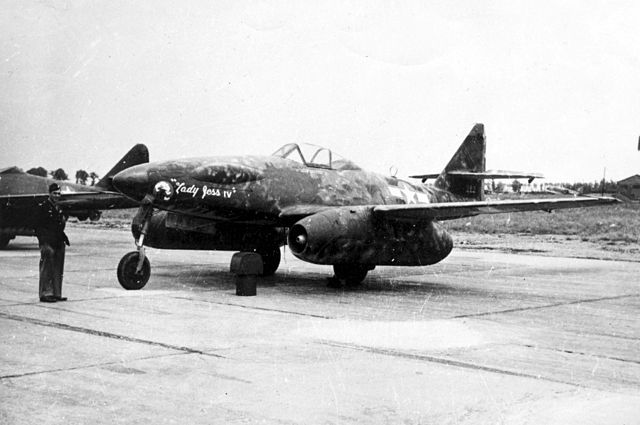
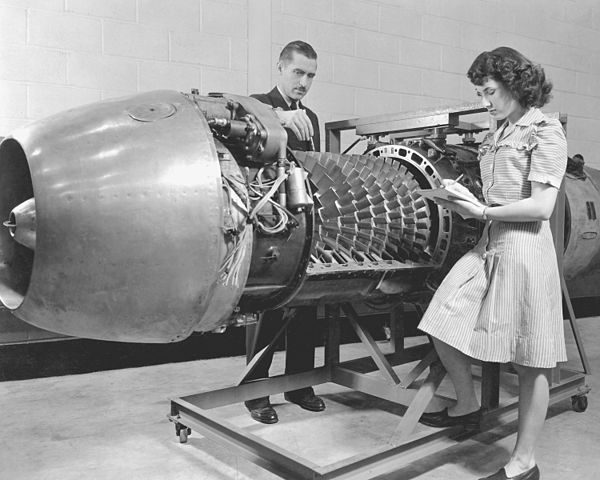
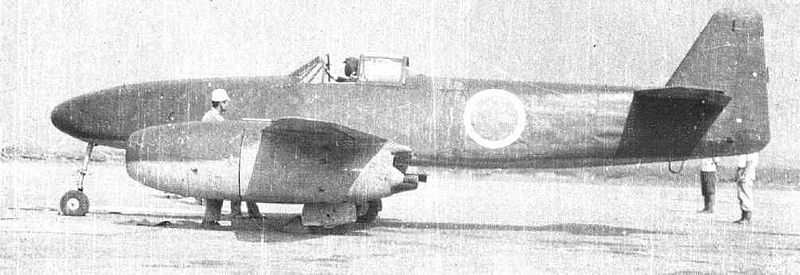
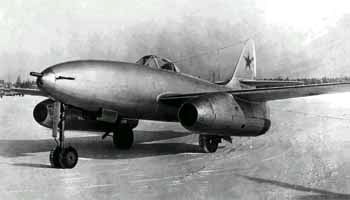
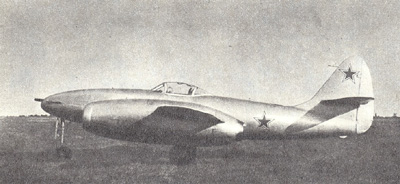

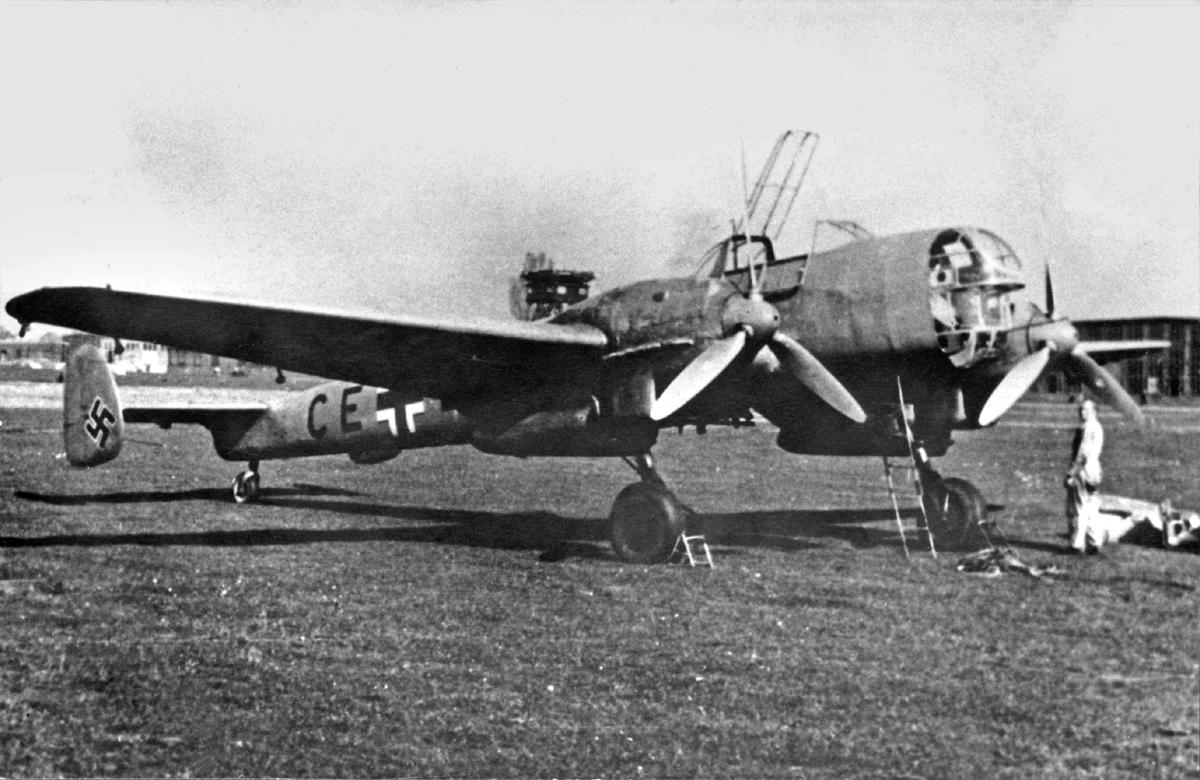
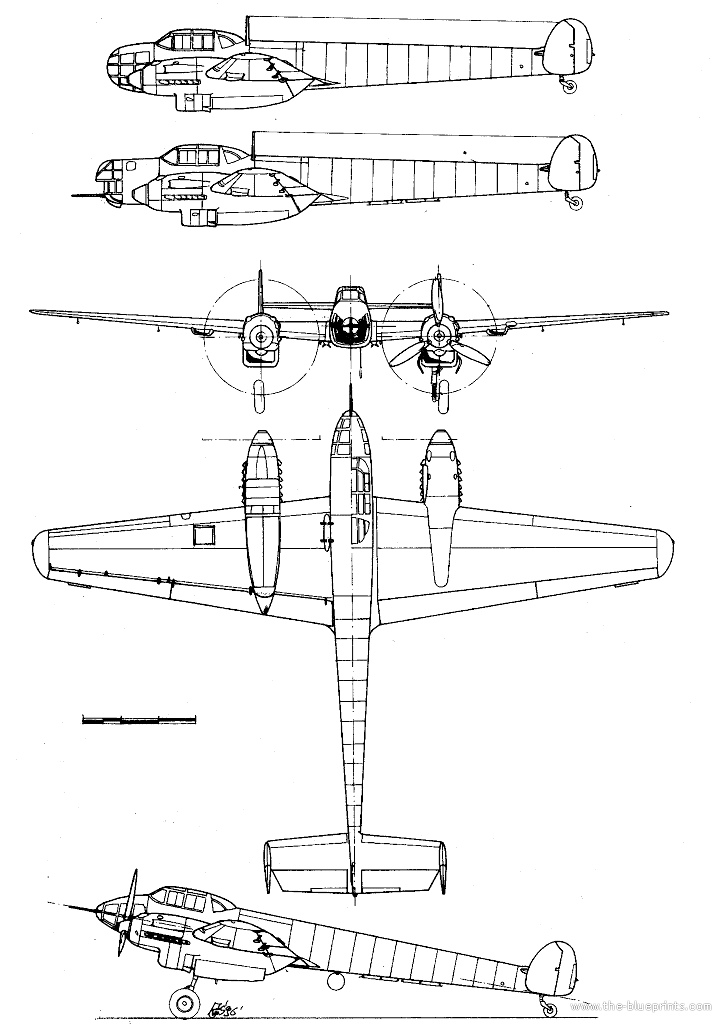


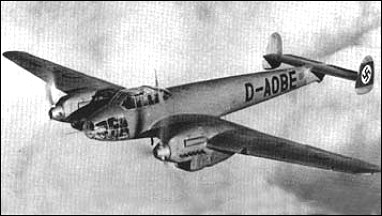

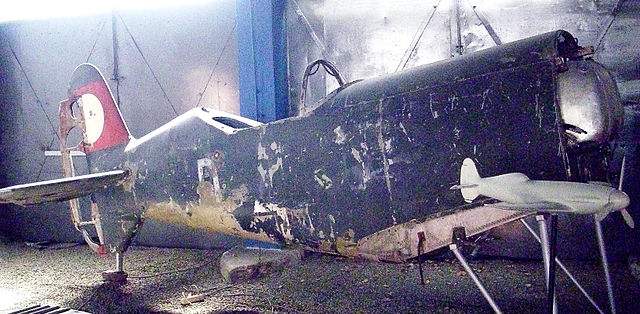
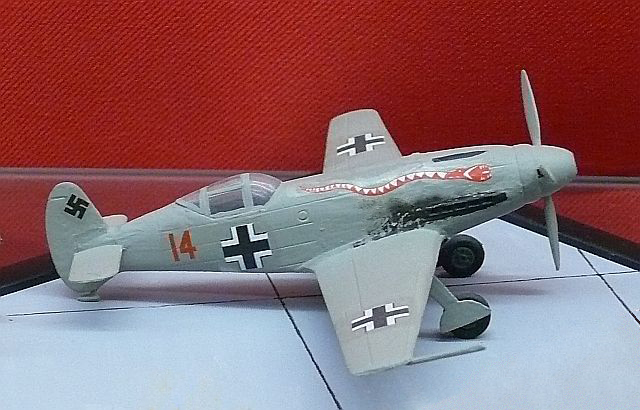


Paper projects - Luftwaffe 1946
Me 265 Zestorer

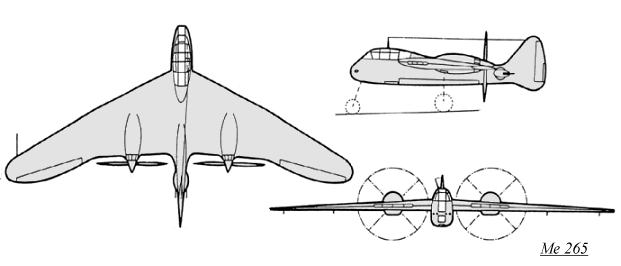
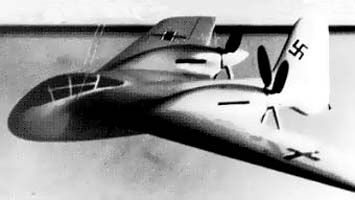
Me 328 parasite

This unusual Messerschmitt was originally designed as a parasite aircraft, to protect Luftwaffe bomber formations during the war. The idea was the bombers carried these in droves for their close protection. The concept of "parasite" was not new: Indeed, airships were the first to carry their own escort fighters in flight during the Great War. In the interwar, the US Navy Acron and Macon became in effect the first airships aircraft carriers but they both were lost and the general concept of airship was dropped after the Lakehurst catastrophy. However planes were getting bigger, and soon by the mid-1930s, the Soviet Air Force tried the first "aircraft carrier plane", a Tupolev TB-2 loaded with I-15/153 or I-16 fighters, over the wings or under the fuselage, attached by trapeze devices and hooks. The idea was extensively tested but was deemed dangerous and never developed. Meanwhile, the idea resurfaced for some time with the allies, and the Luftwaffe. The latter, with pulse jets had a way to develop fighters small enough to be carried by bombers. In fact when the idea appeared too far-fetch, a wide variety of other roles were suggested. Eventually the Me 328 ended as a Selbstopfer (suicide weapon) aircraft, but the experimental pulsejets proved unreliable and unsuitable and doomed the Me 328 concept.

The project P.1073 of 1941 was originated in a concept of a cheap, "expendable", simple escort fighter, towed using a semi-rigid bar (Deichselschlepp) or later, carried in a Mistel type fashion. Eventually three were developed, an unpowered glider, an Argus pulsejets version, and a Jumo 004 turbojet version. Construction was to be mainly of wood to spare strategic materials, and supervised by the German Research Institute for Sailplane Flight. The Me 328A was designed as a fighter and the Me 328B as a bomber and the cost of four Me 328s was estimated equal to one Focke Wulf Fw 190 or Bf 109. However right from the start, the pulse jets were mediocre at medium altitudes due to the lower air pressure as well as generating a huge amount of noise (Same as the "buzzbomb", the V1). Hanna Reitsch tested the two prototypes of the glider version, towed at high altitude and dropped. After many ground and air tests, the RLM enthusiastically planned 1,000 for use as disposable bombers by volunteers from 5/KG200 "Leonidas Squadron". Seven prototypes powered by two Argus As 014 pulsejets were also tested. Built by Jacob Schweyer of Darmstadt they were intended as fighters, armed with two 20 mm MG 151/20 cannons. But excessive vibration literally destroyed the planes in flights and the project was cancelled in 1944. Interest resurfaces in later 1944 for various role and testing either Argus pulsejets, Jumo 004 turbojet, even the Porsche 109-005 single-use turbojet. But the vibration problem was never solved and the Me 328 was eventually cancelled for good.
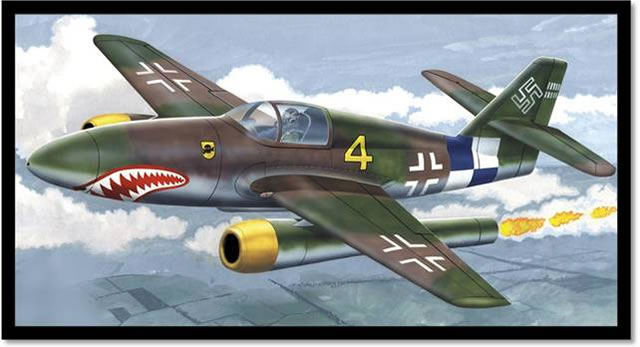
Me 329 Bomber

The Me 329 was 7.715 m (25.312 ft) long, 17.50 m (57.41) wide and 4.74 m (15.55) high, with a flying emty weight of 6,950 kg (15,322 lb) and 12,150 kg (26,786 lb) at max takeoff, propelled by two Daimler-Benz DB 603G 1,397 kW (1,874 hp) engines, allowing a top speed of 685 km/h at 7,000 m (426 mph at 22,966 ft), for a Range 2,520 km (1,566 mi) long, and ceiling 12,500 m (41,000 ft). Each Me 329 should have been armed with two 20 mm MG 151/20 cannons, four 30 mm (1.18 in) MK 108 cannons and a single MK 114 in the nose, and a 20 mm MG 151/20 tail gun. It was designed t carry a payload of 1,000 kg bombs (2,205 lb).
Me 334 Fighter
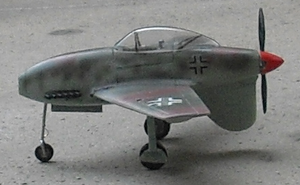
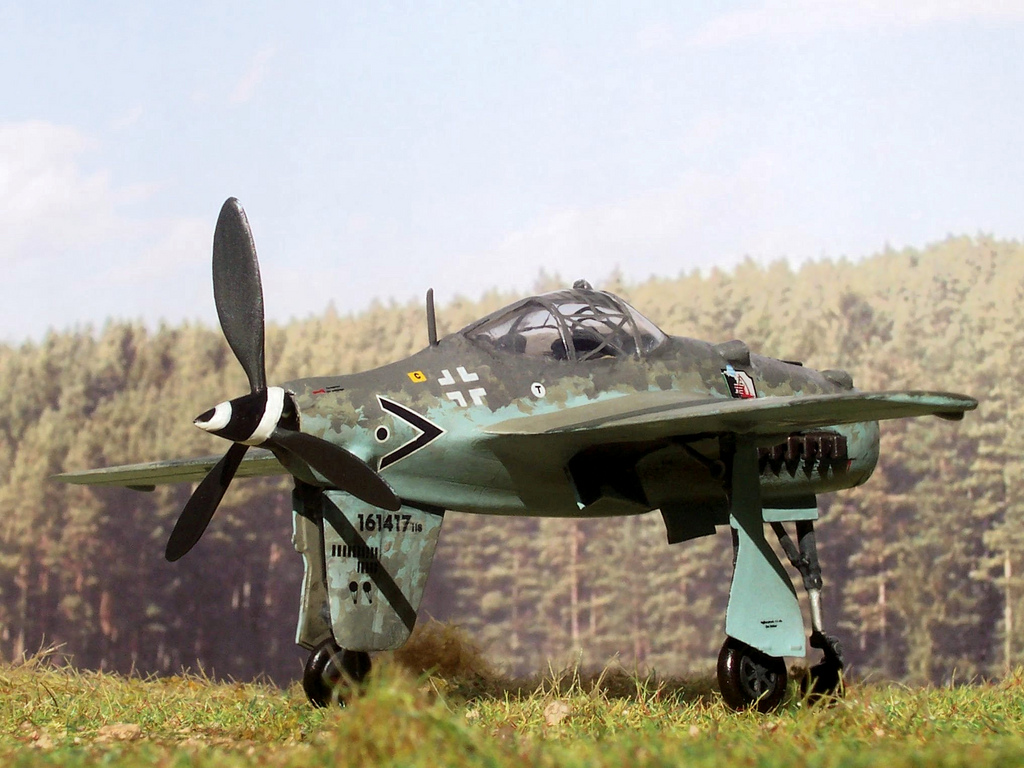
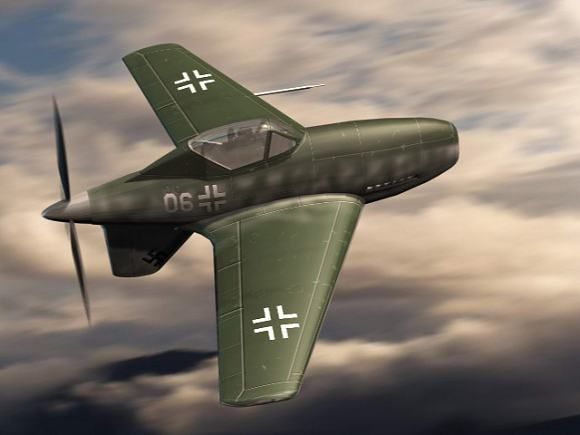
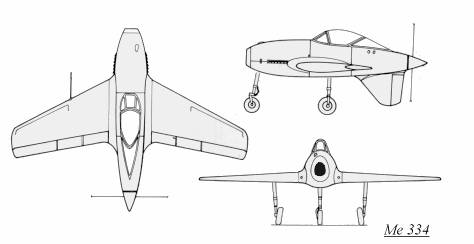
Me 155/409 fighter
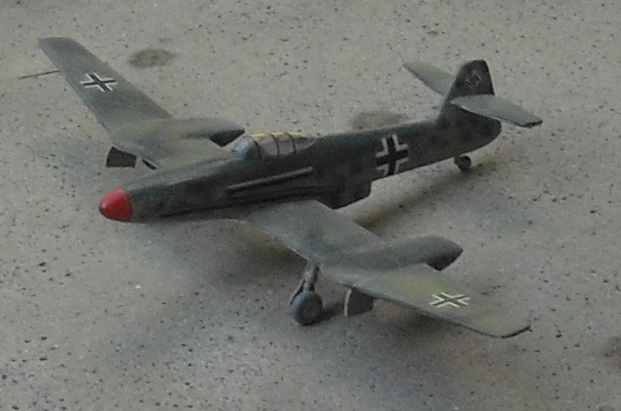
Messerschmitt Me-155 was in fact a Messerschmitt project of an ill-fated but well inspired project later took over by Blohm & Voss as the BV-155. An high altitude interceptor was badly needed by the RLM in 1942 to face the onsaught of allied bombing raids over Germany. But it was a fighter designed to counter a threat that never materialized there, but on the other part of the globe instead, for the sake of larger distances. First estimates of the American B-29 Superfortress indeed already reached German authorities as early as 1942. And after the speed, the record altitude was quite a concern for the german Luftwaffe that had nothing coming close in terms of capabilities in these realms.

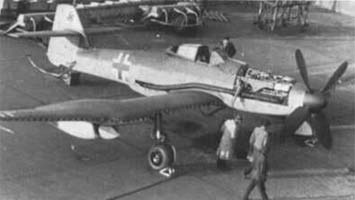
Messerschmitt was naturally approached by the RLM to create an high altitude version of its Me 109. It was in fact born from the short-lived carrier-based single-seat fighter project intended for aircraft carrier Graf Zeppelin. It was a navalized aircraft with somewhat larger wings, stronger undercarriage and other characteristics like folding wings, catapult spools, and arrester gear, called then the Me 155. It was very similar to the 109 G and used the DB 605A-1 liquid-cooled engine of 1,475 PS (1,455 hp, 1,085 kW), armd with three 20 mm MG151 guns and two 13 mm MGs. Despite the additional weight, the prototype speed was estimated to to be 649 km/h (403 mph).
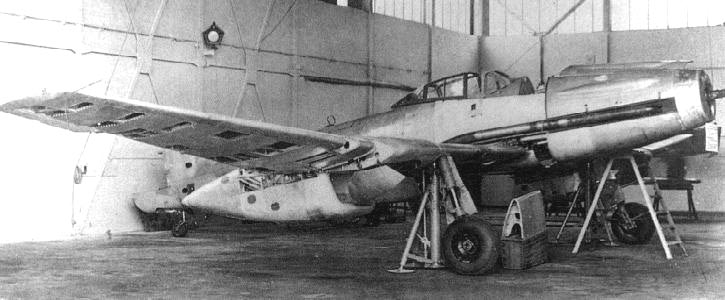

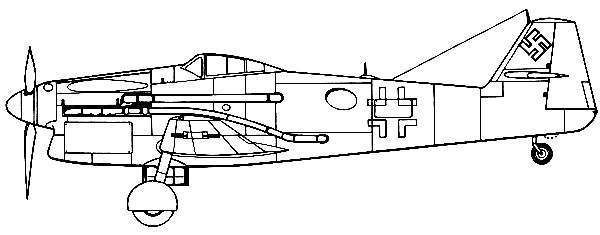
The V 155 V2 flew on February 8, 1945 with modified, larger wing radiators, a pilot's cabin moved forward with a new sliding canopy, new rudder and ventral radiator. Soon the V2 received the DB 603U engine which delivered 1,238 kW (1,660 hp) at take-off altitude (V-3). The Technische Amt accepted it as the BV 155 C. This model a pre-production one, with an estimated speed of 690 km/h (430 mph) at 15,999 m (52,490 ft) and max ceiling of 16,950 m (55,610 ft), comfortably in the area of evolution of all allied bombers. Standard armament would have been a Motorkanone 30 mm (1.18 in) MK 108 and two wing-mounted 20 mm MG 151/20 cannons. The project evolved into the Project 205 which was on paper faster as the new radiators reduced drag. It also had a new annular frontal radiator and its main landing gear leg attachment points were moved forward. But by that time, the war has ended and no production model ever flew.
Me 509 Fighter
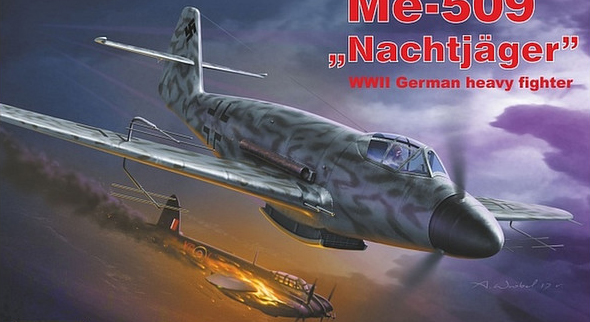

Specifications included dimensions of 9.94 m (32 ft 7 in), 11.27 m (37 ft) ingspan and 3.98 m (13 ft 1 in) in height, 1,085 kW (1,455 hp)for a top speed of 760 km/h (472 mph). It could have been like a Dornier "Pfeil" in reduction, faster than the Mosquito and mpst allied planes of the time, a suitable, long range alternative to the Me 262.
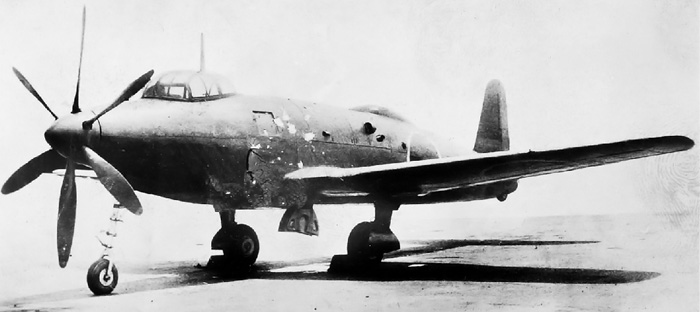
Yokosuka-R2Y1 Keiun, the Japanese copy of the Me 509.
Me 609 fighter
Me P.1079 bomber
Me P.1092 Family
Me P.1095
Me P.1099
Me P.1101/1106
Me P.1110
Me P.1111
Me P.1112
- Lohner E (1913)
- Macchi M3 (1916)
- Macchi M5 (1918)
- Ansaldo ISVA (1918)
- Sopwith Baby (1916)
- Short 184 (1916)
- Fairey Campania (1917)
- Sopwith Cuckoo (1917)
- Felixstowe F.2 (1917)
- Friedrichshafen FF 33 (1916)
- Albatros W4 (1916)
- Hanriot HD.2
- Grigorovitch M5
- IJN Farman MF.7
- IJN Yokosho Type Mo
- Yokosho Rogou Kougata (1917)
- Yokosuka Igo-Ko (1920)
- Curtiss N9 (1916)
- Aeromarine 39
- Vought VE-7
- Douglas DT (1921)
- Boeing FB.5 (1923)
- Boeing F4B (1928)
- Vought O2U/O3U Corsair (1928)
- Supermarine Seagull (1922)
- Blackburn Ripon (1926)
- Fairey IIIF (1927)
- Fairey Seal (1930)
- LGL-32 C.1 (1927)
- Caspar U1 (1921)
- Dornier Do J Wal (1922)
- Rohrbach R-III (1924)
- Mitsubishi 1MF (1923)
- Mitsubishi B1M (1923)
- Yokosuka E1Y (1923)
- Nakajima A1N (1927)
- Nakajima E2N (1927)
- Mitsubishi B2M (1927)
- Nakajima A4N (1929)
- CANT 18
WW1
✠ K.u.K. Seefliegerkorps:
 Italian Naval Aviation
Italian Naval Aviation
 RNAS
RNAS
 Marineflieger
Marineflieger
 French Naval Aviation
French Naval Aviation
 Russian Naval Aviation
Russian Naval Aviation
 IJN Air Service
IJN Air Service
 USA
USA
Interwar
 Interwar US
Interwar US
 Interwar Britain
Interwar Britain
 Interwar France
Interwar France
 Interwar Germany
Interwar Germany
 Interwar Japan
Interwar Japan
 Interwar Italy
Interwar Italy
- Curtiss SOC seagull (1934)
- Grumman FF (1931)
- Curtiss F11C Goshawk (1932)
- Grumman F2F (1933)
- Grumman F3F (1935)
- Northrop BT-1 (1935)
- Grumman J2F Duck (1936)
- Consolidated PBY Catalina (1935)
- Brewster/NAF SBN-1 (1936)
- Curtiss SBC Helldiver (1936)
- Vought SB2U Vindicator (1936)
- Brewster F2A Buffalo (1937)
- Douglas TBD Devastator (1937)
- Vought Kingfisher (1938)
- Curtiss SO3C Seamew (1939)
- Douglas SBD Dauntless (1939)
- Grumman F4F Wildcat (1940)
- F4U Corsair (NE) (1940)
- Brewster SB2A Buccaneer (1941)
- Grumman TBF/TBM Avenger (1941)
- Consolidated TBY Sea Wolf (1941)
- Grumman F6F Hellcat (1942)
- Curtiss SB2C Helldiver (1942)
- Curtiss SC Seahawk (1944)
- Grumman F8F Bearcat (1944)
- Ryan FR-1 Fireball (1944)
- Douglas AD-1 Skyraider (1945)
Fleet Air Arm
- Fairey Swordfish (1934)
- Blackburn Shark (1934)
- Supermarine Walrus (1936)
- Fairey Seafox (1936)
- Blackburn Skua (1937)
- Short Sunderland (1937)
- Blackburn Roc (1938)
- Fairey Albacore (1940)
- Fairey Fulmar (1940)
- Grumman Martlet (1941)
- Hawker sea Hurricane (1941)
- Brewster Bermuda (1942)
- Fairey Barracuda (1943)
- Fairey Firefly (1943)
- Grumman Tarpon (1943)
- Grumman Gannet (1943)
- Supermarine seafire (1943)
- Blackburn Firebrand (1944)
- Hawker Sea Fury (1944)
IJN aviation
- Aichi D1A "Susie" (1934)
- Mitsubishi A5M "Claude" (1935)
- Nakajima A4N (1935)
- Yokosuka B4Y "Jean" (1935)
- Mitsubishi G3M "Nell" (1935)
- Nakajima E8N "Dave" (1935)
- Kawanishi E7K "Alf" (1935)
- Nakajima B5N "Kate" (1937)
- Kawanishi H6K "Mavis" (1938)
- Aichi D3A "Val" (1940)
- Mitsubishi A6M "zeke" (1940)
- Nakajima E14Y "Glen" (1941)
- Nakajima B6N "Jill" (1941)
- Mitsubishi F1M "pete" (1941)
- Aichi E13A Reisu "Jake" (1941)
- Kawanishi E15K Shiun "Norm" (1941)
- Nakajima C6N Saiun "Myrt" (1942)
- Yokosuka D4Y "Judy" (1942)
- Kyushu Q1W Tokai "Lorna" (1944)
Luftwaffe
- Arado 196 (1937)
- Me109 T (1938)
- Blohm & Voss 138 Seedrache (1940)
Italian Aviation
- Savoia-Marchetti S.55
- IMAM Ro.43/44
- CANT Z.501 Gabbiano
- CANT Z.506 Airone
- CANT Z.508
- CANT Z.511
French Aeronavale
- GL.300 (1926-39)
- Levasseur PL.5 (1927)
- Potez 452 (1935)
- Loire 210 (1936)
- Loire 130 (1937)
- LN 401 (1938)
Soviet Naval Aviation
- Shavrov SH-2 (1928)
- Tupolev TB-1P (1931)
- Beriev MBR-2 (1930)
- Tupolev MR-6 (1933)
- Tupolev MTB-1 (1934)
- Beriev Be-2 (1936)
- Polikarpov I16 naval (1936)
- Tupolev MTB-2 (1937)
- Ilyushine DB-3T/TP (1937)
- Beriev Be-4 (1940)
-
Skoda Š-328V
R-XIII Idro
Fokker C.XI W (1934)
WW2
- De Havilland Sea Vixen
- Hawker Sea Hawk
- Supermarine Scimitar
- Blackburn Buccaneer
- Hawker Sea Harrier
- Douglas A4 Skyhawk
- Grumman F9F Panther
- Vought F8 Crusader
- McDonnell-Douglas F-4 Phantom-II
- North Am. A5 Vigilante
- TU-142
- Yak 38 forger
☢ Cold War
✧ NATO
 Fleet Air Arm
Fleet Air Arm
 US Navy
US Navy
☭ Warsaw Pact
Merch

Seafire Mark 45; HMS Pretoria Castle

Zeros vs its aversaries

Aichi D3A “Val” Junyo

Mitsubishi A5M poster

F4F wildcat

Macchi M5

SBD Dauntless Coral Sea

SBD Dauntless USS Enterprise

SBD-4 CV22
